Between prewar, interwar and cold war designs, the Soviet Union’s Navy (Sovietsky Flota) aligned about 32 cruisers, many after the 1917 being relics of the pf even before the war of 1877 or the Russo-Japanese war. Those built afterwards were either designed to take the place of the cruisers sunk and captured, but also improved and updated in design. This was a considerable effort, so much so than a few were even ordered to Germany (Like the Amursky class), some being ordered even before the 1905 war in emergency like the US-built Varyag. So this post will present this inheritance and what was left of it after the Revolution, Interwar conversions, projects and relationship with Italy which dictated the first “domestic” designs, to end with wartime construction and projects, and cold war developments under Stalin’s direction.

The Russian Fleet Inheritance
The Revolution of October 1917 which toppled the regime left many questions in suspensions, chief of which what would become of the Russian Imperial Army and belligerence, and the fate of the Russian Imperial Navy. The latter was at some point the third largest (before the Russo-Japanese war), with one of the most sizeable cruisers fleets to be present in the Baltic, Black Sea and Pacific at the same time. And the Navy with its mutinies was the first to side with the revolutionaries. It’s symbol was a cruiser, Aurora, which fired hthe signal shot for the storming of St.Petesrburg’s palace. Sailors of the Baltic fleet supplied arguably the best fighting force of the Bolsheviks. Long story short, in 1917, the new regime inherited of a collection of ships, some going back decades. The fleet was inactivated, ships at sea were ordered to come back to port and especially in the case of the Black Sea Fleet, officers were rounded up and shot. A comittee was set in place to decide of its fatet. Some cruisers had been sunk in action also during the war, like Minin, Gerzog Edinburgski, Pallada, Zhemchug.
Among the ships obtained by the revolutionary government were (from oldest to most recent):
Armoured Cruisers
General Admiral (1873)
Pamiat Azova (1888)
Rossia (1896)
Gromoboi (1899)
Admira Makarov (1906)
Bayan (1907)
Pallada (1906)
Rurik (1906)
Protected Cruisers:
Aurora (1900)
Diana (1899)
Askold (1900)
Bogatyr (1901)
Kagul (1902)
Oleg (1903)
Ochakov (1902)
Almaz (1903)
The state of these ships was variable, but as long as crews were framed by willful officers and had the capacity of doing propoer maintenance, it was done. However the new Revolutionary Government had no plans for the Navy yet, attention soon focusing on securing the interior in a still troubled situation, close to chaos. In 1919, the civil war started, with the implication of the Western Powers. Full support was given to the “white russians” and among others the Black Sea became the theater of naval violent takeovers, while Kronstadt in the Baltic was under attack by a coalition led by the Royal Navy. It’s at that time that the “Red Army Navy” -by default of a better name- was constituted to try to get these aforementioned ships in shape if possible.
The Soviet Navy was formally established as the “Workers’ and Peasants’ Red Fleet” or RKKF by a 1918 decree of the new Council of People’s Commissars, but it was a paper tiger, with ships worn out, in poor condition of lacking crews and fuel. One was sent into action though, the old Pamiat Azova reconverted into a minelayer, and sunk on 18 august 1919. She was attacked in the Bay of Kronstadt by torpedo boats backed by aviation. The second was Oleg (Bogatyr class), torpedoed and sunk on the night of 17 June 1919 by Royal Navy speedboat CMB-4.
Fate of WW1 Russian cruisers
Ships remaining in Sevastopol were captured by the Germans. The armistice of 1918 saw more ships confiscated by the British, or the Finns later.
Let also cite the unique case of the Wrangel’s fleet (which comprised two battleships, the cruisers General Kornilov and Almaz, 12 destroyers, submarines, torpedo boats, minelayers and many auxiliaries). This “White” flotilla, was soon deprived of its main bases, and forced to flee the Black Sea via the Dardanelles to the Aegean Sea and crossing to Bizerta (French Tunisia) for internment.
In the end, the once mighty Baltic Fleet was reduced to two cruisers and ten destroyers, still remaining a significant naval formation. The Black Sea Fleet was however in such a shape there was only room for expansion. There were also riverine vessels of all size and tonnage in various places, which however were in better shape and saw lot of action during the Civil War.
The general state of the fleet was such that the Soviets were not invited to participate in the Washington Naval Treaty negociations. Indeed, the bulk of the “old fleet” was sold by the Soviet government to post-war Germany for scrap. The new government eagerly needed cash and its focus was not on the fleet but on the Army. The Navy fell Imperial might and revolutionary glory, to the “poor child” of the Red Army.
Here are specific cases:
Prut (ex-Medjidieh) was captured after sinking off Odessa, hitting a mine. She was repaired and modernized, ready by January 1917 but captured in Sevastopol by the Germans by May 1918 and returned to their former owner.
Peresviet: The ex-Perseviet, ext-Sagami captured in Port Arthur, was returned to Russia, but hit mines off Port Said in 1917 by January 1917.
Variag: The US-built cruiser was scuttled in Chemulpo in in 1904, was raised to become Soya, and returned to Russia at Vladisvostock in April 1916. During the revolution she had crossed many miles to be interned in Liverpool, and latter scrapped.
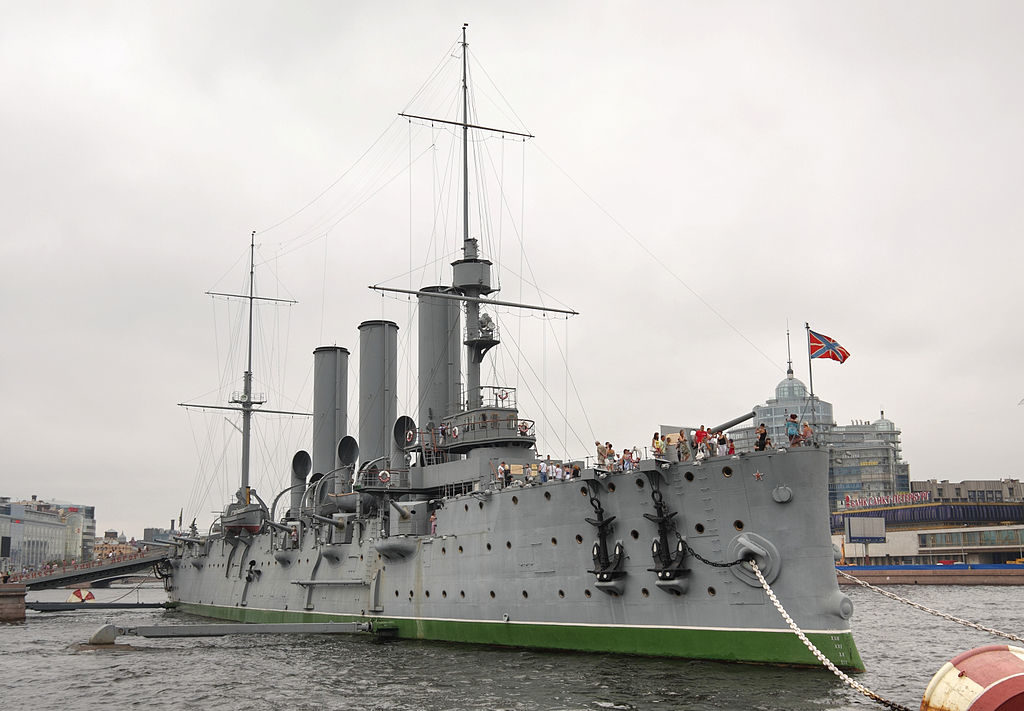
The very famous Aurora, a floating museum of the revolution from 1948. After being the starting point of the St Petersburg revolution, she was left “to rot”, but eventually maintained and was put back into service in 1923 as a cadet training ship, a role she held until 1931. She remained Leningrad, until the 1941 invasion, bombed by the Luftwaffe and scuttled to avoid capture. Raised in 1944 she was repaired and restored to its original state of 1917, now quite an attraction in Leningrad today.
The case of the Svetlana & Nakhimov class
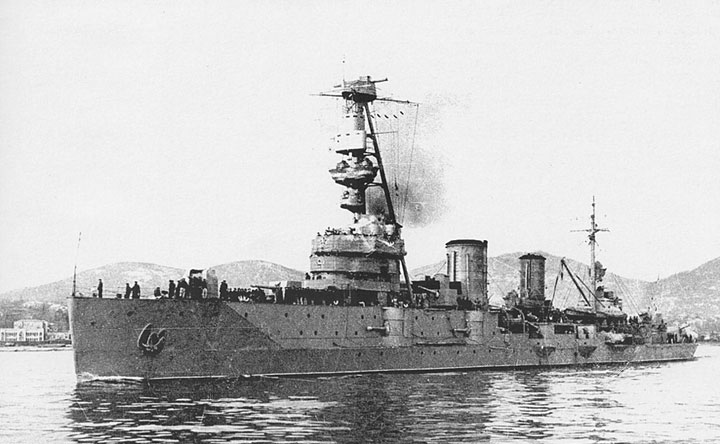
In addition to the ships listed above, there was still the prospect of a later completion of the Svetlana class. These post-1905 replacements had been complementary of the pair ordered in Germany and requisitioned in 1914: The Murarev Amurski became the Pillau class. The Svetlana laid down in 1913 in the Baltic saw all construction stopped. The workforce was soon drafted and resources were focused on artillery and shells or armored trains.
Former naval yards started to work on armoured cars. In 1917 all four cruisers (plus two) had been launched, but not completed. Work until then had been slow, but proceeded anyway, but the revolution stopped all this. They were left in their slipways at Russo-Baltic Reval Yard and St Persburg’s Putilov Works, pending a decision. There again, more urgent issues prevented to resume any work. Meawnhile the hulls degraded, and it was not until well after the end of the civil war that the newly formed amiralty of the RKKF looked on how best to complete them (see later), despite their prewar hull design.
Also of note, there was another minelayer cruiser project of the Russian Imperial Navy that never came to fruition. They were authorized in 1915 by the emergency program, for the Baltic. As designed by the admiralty they were in the range of 4000-5000 tonnes, arled with six to eight 130mm/55 guns and able to cary 350 to 450 mines. Their design reflected what was learned during the the success of minelaying operations by light forces. They also draw some influence from the German Brummer class. They would stay a paper project, unnamed.
→ Svetlana (LD 07/12/1913) > Profintern 1922 Comp 1926 Renamed Krasny Krim 1939 BU 1960
→ Admiral Butakov (LD 29/11/1913) launched 8/1916 BU incomplete 1956
→ Admiral Spiridov (LD 29/11/1913) launched 9/1916 Hulked 1947
→ Admiral Greig (LD 07/11/1913) launched 12/1916 stranded 12/1938
The second serie also comprised four ships: Two completed (*one on a very different design)
→ Admiral Nakhimov (LD 31/10/1913) > Chervonia Ukraina 1926 Foundered 11/1941
→ Admiral Lazarev* (LS 31/10/1913) > Krazny Kavkaz 1932 sunk 1950s
→ Admiral Kornilov (LD 7.14) BU incomplete 1922
→ Admiral Istomin (LD 7.14) BU incomplete 1938
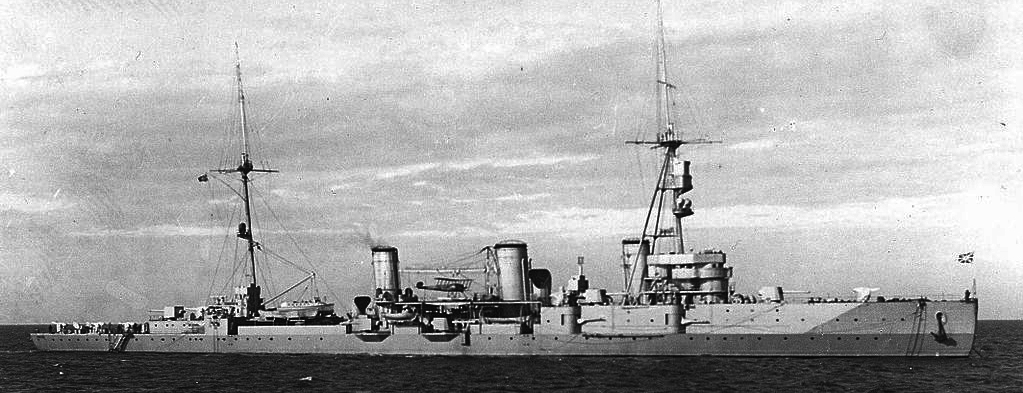
Chervonia Ukraina in 1930
This class survived -almost- entirely the civil war and saw service in the interwar, modernized as part of the 1st 5-year plan: They allowed the new RKKA, with the sole survivors of the Nakhimov class, to constitute at least a solid core to the Baltic, Black Sea and Pacific fleets, with four cruisers.
The Admiral Nakhimov and Svetlana of the Tsarist Navy, ordered in 1913, launched in 1916, were never completed due to the outbreak of the civil war. They were the top two in the class. Another later became Krasny Kavkaz, after total reconstruction. These two ships were more piles of rusty sheets when seized in 1921, and it was decided to save them for a completion.
–Profintern (ex-Svetlana) was the first to be completed on the original plans, in 1925. She spent another three years of trials before being accepted for service.
–Chervonia Ukraina, her sister-ship, was completed in 1922, but again her trials continued until 1927. They were then of a totally outdated design, their machines delivering only 22 knots instead of the 29 planned and their artillery of 130 mm at the quarterdeck or barbettes being imprecise in heavy weather.
Profintern was sent to the Black Sea in 1929. She will be modernized there in 1939, receiving new modern rangefinders, lost her catapult, cranes and planes to regain stability while gaining a more effective AA than its four original 65 mm guns, with six 75 mm like her sister-ship. Renamed Krasny Krim she re-entered active service in November, only to return some time later for extra AA modernization completed in 1941. For her part, Chervona Ukraina received a modernization of the same type between 1939 and 1941. She was also in service in the Black Sea during the German invasion. Both sisters defended Odessa and Sevastopol. During these operations, Chervonia Ukraina was badly damaged by Stukas of Stgswr 77 on November 12, 1941. She sank the following day. After the fall of Sevastopol, Krasny Krim escaped to Poti, and led a number of offensive sorties, receiving two new 76mm AA guns, and in 1945 a USN air warning radar. In March 1945, she became a training ship, used as such until 1958.

Specifications
Displacement & Dimensions: 6,900t, 8,200t FL; 158.40 x 15.36 x 5.65m
Propulsion: 2 shafts Brown-Curtis turbines, 12 Yarrow boilers, 46,300 hp. 22 knots.
Armor: Belt 76mm (3 in)
Crew: 750
Armament: 15×1 130mm guns, 6×1 100mm DP guns, 10x 37 AA guns, 7x 12.7mm HMG, 4×3 533 mm TTS, 100 mines, 1 catapult and seaplane.
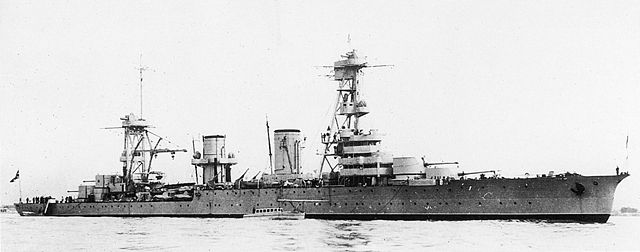
Krazny Kavkaz was the former Admiral lazaref, saved and completed in 1932 in a completely new design.
Krazny kavkaz is singular in more ways than one: Firstly because she was a completely redesigned and rebuilt old ship (a 1913 Svetlana class cruiser), but also because of her main armament and her configuration. She was at the time a ship assigned to the Pacific fleet, opposed to Japanese cruisers of that time. It was a question of facing the Kako class (six 8-in or 203 mm in simple turrets), a configuration also retained by the Russians, but limite to four, and with experimental 180 mm gins in fore and aft superfiring turrets. These 180mm guns however compensated by a faster rate of fire.
Ultimately, Krazny Kavkaz, launched in 1916, was completed in 1932 in this aspect, but sent instead to the Baltic in 1939 to participate in the Finnish campaign. By this time her AA armament had been changed from 4 x 45mm guns to 8 x 37mm guns and 6 x 12.7mm DHSK heavy machine guns. In 1941 she was damaged by German coastal artillery, then the Luftwaffe in 1942 off Tuapse. She was sent to Poti for repairs. She received on this occasion extra AA guns and jer machinery was changed for that of the recently lost cruiser Chervonia Ukraina. In 1944 her AA armament was reinforced with 6 twin 100 mm DP turrets, four 37 mm AA guns and two more 12.7 mm DsHk machine guns, then with the removal of the hangar and catapult, two quadruple 7 mm LMG on her upper turrets.
She survived the war and became a training ship, served in that role from 1947 until 1956 until being used as a test target for SSN-1 sea-to-sea missiles, sinking in 1956.

Specifications
Displacement & Dimensions: 7650t, 9030t PC; 169.50 x 15.70 x 6.20m
Propulsion: 2 turbines, 12 Yarrow boilers, 55,000 hp. 29 knots.
Armor: Decks, belt 76mm, barbettes 80, turrets 76mm, CT 152mm
Crew: 850
Armament: 4×1 180 mm, 4×1 100mm, 4x45mm AA guns, 4 12.7mm HMGs, 4×3 533 mm TTs, 100 mines, 3 floatplanes.
The 2nd five year plan and search for a new cruiser
The complete redesign of the Krazny Kavkaz and modernization of the three Profintern had provided the Soviet Navy with a welcome base. However these ships had essentially a pre-WWI conception and were too small to face treaty cruisers of the 1930s.
The Italian Design Influence
One aspect which is really specific to the Soviet Navy, given it’s isolation on the international sphere was the search for a modern design by the admiralty. Until then, the partial rebuiding of the Svetlana (Profintern class) and Krazniy Kavkaz has been on some help, but the admiralty wanted modern cruisers based on its own requirements, completely out and free of all limitations. Therefore instead of all other great navies of the time (USN, Royal Navy, IJN, French and Italian ones), or even like the severely restricted Versailles-treaty bound Kriegsmarine, the Sovietsky Flot was free to design its proper cruiser types, coming to a very peculiar set of designs.
Four types were envisioned overall in the early 1930s:
-Scout cruisers (Razvedchik Kreyzer or RKR): The old rebuilt WWI types, and a future class of scouts never built (Like Design X)
-Light cruisers (Legkiy Kreyzer or LKR), of a fleet type (The future Project 26 and following), the “Soviet Condotierri” as they were built in pairs on Italian design. They were designed to outclass contemporary light cruisers and therefore had larger guns, of 18 instead of 15 cm caliber.
-Medium Cruisers (Sredniy Kreyser or SKR), which really were “heavy cruisers” with not 8-in but rather 9 in (220-230 mm) to outclass or even hunt down other cruisers. Several Projects, but none realized.
-Battlecruisers (Boyevoy Kreyzer or BKR), which became the Kronstadt and later Stalingrad types at the insistence of Stalin.
Relations between Italy and the USSR
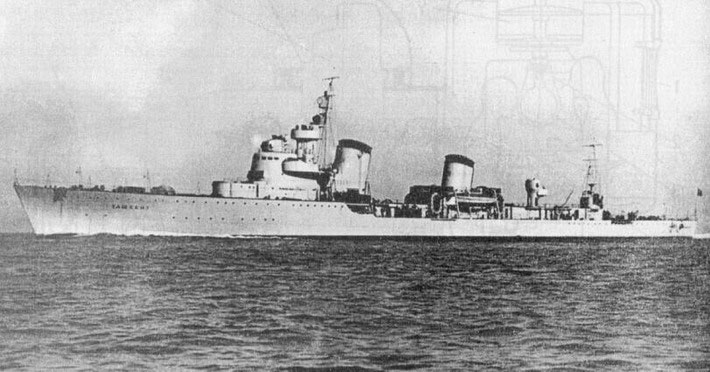
Tashkent, delivered from Livorno to USSR without armament due to international conventions regarding the bosphorus, despite degrading relations with USSR.
Due to the essentially “socialist” regime proned by Mussolini in its early years, a natural rapprochement was done with USSR. The Soviets and Italians maintained contacts since 26 December 1921, signing a trade agreement, and having full diplomatic relations from 7 February 1924, Italy being the first Western nation to recognize Soviet Union. On 6 May 1933, there was the signing an economic pact with shared interests in industrialisation, with Italy requesting Soviet oil and coal, while in returned Soviet engineers would have access to the latest designs in the aviation, automobile and naval fields.
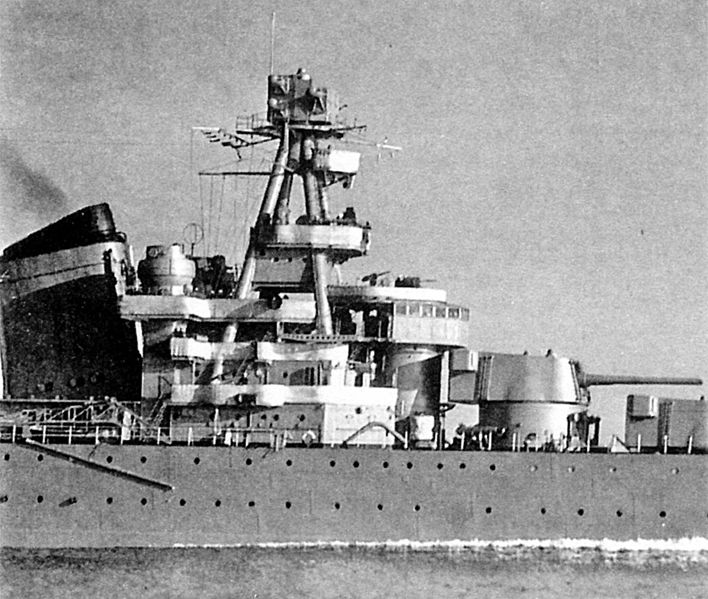
Bridge structure of the Kirov class, reminsicent of the Zara class with its quad-leg mast.
The ideological conflict between the two was largelt an internal matter, and this frame enabled important transfer of technologies in the naval sphere. It was not limited to the Abruzzi class being copied. The second example was the “blue beauty”, the famous destroyer leader Tahskent, delivered as is, without armament to be declined into a full class and strong design influences for the Gnevniy class destroyers (single funnel, bridge, general design) as well and some submersibles of the era.
Other friendly exchanges in 1933 showed an Italian submarine visiting Batum (Black Sea) or three Soviet vessels visited Naples. However woth Adolf Hitler’s rise to power in Germany compliocated the situation, between tense Soviet-German relations, uncertain Italy-Germany with the shadown of the annexion of Austria and incursions in South Tyrol, or a potential Soviet-Italian-Turkish stability alliance, which caused the ire of Berlin. In fact Mussolini even mobilised Italian troops in the summer of 1934 on the Brenner Pass to ensure Austrian independence.
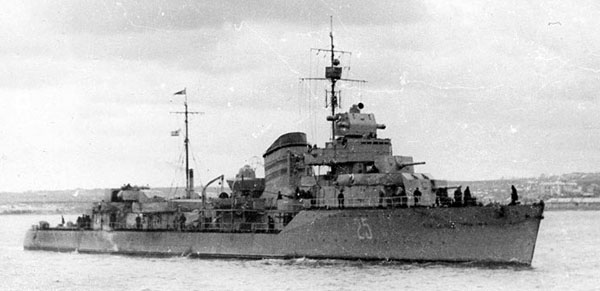
But in 1936, Italy violated the pact when supporting Francisco Franco at the start of the Spanish Civil War, developing later de facto as a proxy war with USSR. In return perhaps, the Soviet Union applied economic sanctions imposed by the League of Nations on Italy for its invasion of Ethiopia. In return, Italy joined the Anti-Comintern Pact in 1937 with Germany and Japan. And eventually in 1939, Italy also provided Finland military assistance and equipment (the Regia Aeronautica for exemple sent 35 Fiat G.50 fighters and the Esercito some 94,500 M1938 7.35 mm rifles). However Soviet Union had now a new partner, Germany, which intercepted Italy’s aid, released after peace was signed. The near-dead pact was officially torn off on 22 June 1941 de facto at the start of the invasion of Soviet Union, since Italy joined in.
The Italo-Russian Project 26 Light Cruisers
VM Orlov query for Italian cruisers
At the end of 1930, a special commission led by the head of the Technical Directorate of the UVMS of the Red Army A.K. Sivkov in Italy negotiated the acquisition of a number of warships of various types for the USSR, including light cruisers. V. M. Orlov showed the great interest at that time for light, high-speed cruisers of the Condottieri superclass. Since the Italians refused to sell one of these, in January 1932, V. M. Orlov turned to Commissar K. E. Voroshilov with a proposal of an tailor order and later licence or unclicenced copying, or build a cruiser in USSR with the help of Italian specialists. In February 1932, V. M. Orlov was sure these would meet modern technical and military requirements.
On April 15, 1932, V. M. Orlov approved the document signed by the head of the Training and Combat Department of the Navy E. S. Pantserzhansky to develop a light cruiser project. Requirements were to:
-Support submarine combat operations
-Reconnaissance and reconnaissance support
-Lead destroyer attacks
-Repelling destroyers attacks
-Repelling enemy landings
-Providing tactical landings support
-Participation in fleet combined strikes at sea,
-Combat enemy light cruisers.
According to the OTZ, This initial project was to have:
Armament: four (2×2) 180-mm guns, 4×1 100-mm dual purpose, 4×1 45-mm AA guns, 4×1 12.7-mm heavy machine guns, 2×3 torpedo tubes banks, four DI-6 floatplanes, on two catapults.
Powerplant: Maximum speed of 37-38 knots, cruising range of 3,000-3,600 miles
Standard displacement: No more than 6,000 tons.
Later a second option with three twin-gun turrets (2 bow, 1 stern) were also proposed.
Pre-sketch design was entrusted to the shipbuilding section of the Scientific and Technical Committee (NTC), Yu. A. Shimansky. In the summer of 1932, the commission of the Navy with chief engineer of TsKBS-1 V. A. Nikitin, signed an agreement with Ansaldo to provide one set of powerplant modelled on the Raimondo Montecuccoli class and theoretical drawing. The Italians would also accordig to this document provide consulting on design, and technical assistance even at the stage of building the Yards slipway, production of boilers, turbines and auxiliary parts for the powerplant.
Project 26 evolution from two twin to two triple turrets
Preliminary calculations in 1932-1933 had the NIVK confirming the installation of six 180-mm guns in three twin turrets, with an increase to 6500 tons and reduction of the aviation onboard to two KOR-2. Hull armor scheme was calculated, based on the 6-in (152-mm) shells at 85-115 cables 0-50° angle of up to and 130-180°.
On March 19, 1933, V. M. Orlov approved the document asking for a light cruiser with turbines based on the Montecuccoli, capable of delivering 106-120,000 shp. By April 20, 1933 Orlov approved the first draft design and on May 8, the Naval Administration worked with TsKBS-1 (TsKB-17) on the full development of the project under A. I. Maslov as project manager, V. P. Blagoveshchensky as Navy observer and it became Project 26. The drawing evolved more into the Duca d’Aosta type, larger than the Montecuccoli class, but with the same powerplant.
On October 5, 1934, during a meeting, Leningrad Plant chief engineer A. A. Florensky presented his work on the main battery turrets, and proposed instead to install three guns in each, all mated on the same cradle which, at the price of increasing the mass of each turret by 30 tons. On November 5, the proposal was approved and draft modified accordingly. Thus also brought design changes to the aft hull design, barbettes, wells, and citadel. The stern was aksi changed with the installation of anti-mine paravane, with a transom shape, a first at the time. The hull would be of a mixed sdesign with amidship longitudinal beams construction with a frame spacing of 750 mm, and at both ends a transverse construction with 500 mm spacing, rather than the 760 mm on the Italian cruisers.
There were enough compartmentation to ensure floatability in case even of three adjacent compartments flooded. Deck and side armor were integrated into the main structure, providing overall longitudinal strength. The thickness of deck armor was increased, and after all these, these hulls ended much stronger than the contemporary Montecuccoli and Aosta designs.
It was necesary soon to also increased power, with the main geared turbine units modified with preliminary calculations of a final design of 7,700 tons, resulting in a top speed of 37 knots during tests based on 126,500 hp. The final project, leading to yard orders, was approved on October 29, 1934.
 Project 26: Kirov class (1937)
Project 26: Kirov class (1937)
Kirov, Frunze, Maxim Gorky, Molotov, Kaganovitch, Kalinin
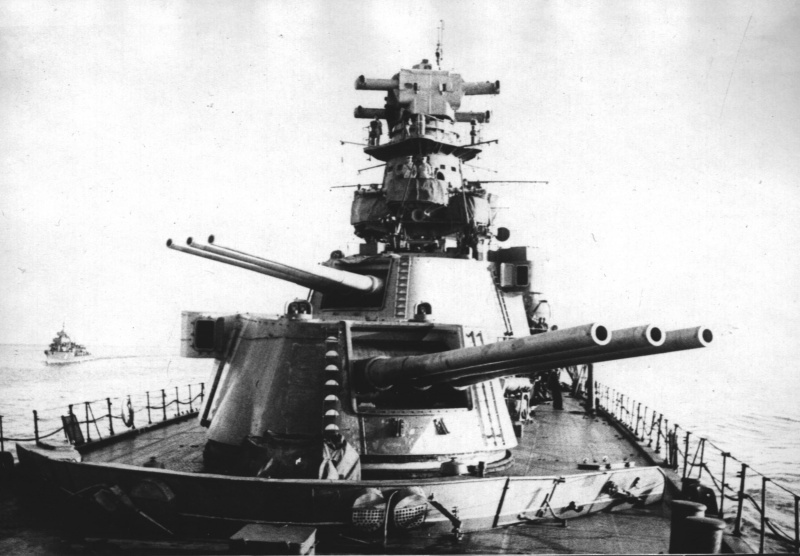
The cruiser Molotov’s 7-in guns crossed
The two Kirov-class cruisers were the first new heavy cruisers since the Rurik of the Tsar’s Navy, apart from the three Svetlana rebuilt in the 25-30s. As a result, sorely lacking in competent engineers in the field, the Russians entrusted the study of these ships to the Italians from the Ansaldo design bureau. Quite classic in their design, the Kirov and her sister-ship Voroshilov however show two originalities, their transom stern, and main artillery of three triple 180 mm gun turrets.
Their initial hull was still very light (7,000 empty tons), greatly reinforced and rising up to 7,880 tons for the Kirovs and 7,970 for the Voroshilov. This very relative overweight was mainly the result of a better protection compared to Italians cruisers. In fact, the planned initial speed fell to 36 knots on the Kirov and 34 on her twin. They were completed in 1938 (Kirov) and 1940 (Voroshilov), their AA armament reinforced shortly before 1944 by ten extra 37 mm guns, replacing their old 45 mm mounts.
These two ships served actively during the war and survived it. Kirov took part in the Finnish winter war in 1939, carrying out coastal bombardments, before joining Tallinn for home defense after the German invasion of June 1941, then Kirov was returning to the defense of Leningrad. She was bombed by the Luftwaffe and badly damaged, but repaired and active by late 1943, supporting the Leningrad winter counter-offensive in 1944. Kirov remained in service until 1976-77 as a training ship. Voroshilov took part in various coastal shelling missions after June 1941, but by October by wreck by bombers and sent to Poti for repairs. She and came out in February 1942, to support the winter counter-offensive. She struck a mine in November 1942, sent for repairs to Batum, but still not repaired in 1945. She served in to the 1960s.

Specifications – Kirov class
Displacement & Dimensions: 7,900t, 8,800t PC; 191 x 17.66 x 7.23m
Propulsion: 2 Parsons turbines, 6 Yarrow-Normand boilers, 113,000 hp. and 36 knots max.
Armor: deck crew, belt, 50 mm barbettes, 76 turrets, 152 mm blockhouse; Crew 734
Armament: 3×3 180mm guns, 6×1 100mm DP guns, 6×1 45mm AA guns, 4×1 12.7mm HMG, 2×3 533mm TTs, 2 catapults and 3 floatplanes.
Project 26bis: Maxim Gorkiy class cruisers (1938)
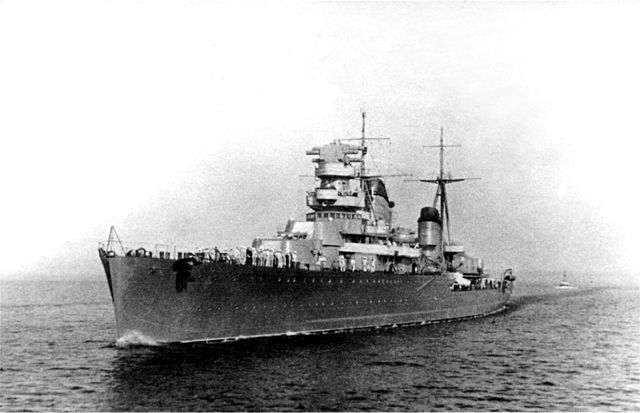
This second cruiser class was a straight line derived from the previous Kirovs. They differed externally only by their superstructure (tower rather than tripod), dimensions very slightly higher for 100 tons more, a higher output but unchanged speed. Their 45 mm AA artillery was augmented by two more AA mounts. Gorkiy was completed in November 1940 and the Molotov in June 1941. Both were in service during the invasion. They were followed by the Kaganovich (June 1944) and the Kalinin (1943). They received on this date all four ten more 37 mm AA guns and four ASW Depht charge throwers. The were also configured to lay mines.
–Gorkiy hit a mine in June 1941, lost her bow. She survived, was repaired temporarily in Leningrad, embossed and used for AA defense. Whne German rail artillery and heavy filed guns engaged her, she was badly damaged, and finished off by the luftxaffe in April 1942. But she was repaired and operational in 1943, supporting the great Leningrad counter-offensive of 1944. She survived the war and was withdrawn from active service in 1958.
–Molotov took part in the defense of the Black Sea. Present in Sevastopol she was attacked on August 3, 1942 by Italian MAS 568 MTBs, losing also her bow. She was repaired with the uncomplete Frunze’s bow whose construction was interrupted. She was back in action at the end of 1944, served many years post war until being turned into a training ships and was eventually decommissioned in 1972.
–Kalinin and the kaganovich of the fourth batch were launched at Komsomolsk on the Amur, towed for completion at Vladivostock because of their draft. They were eventually in service with the Pacific Fleet, but remained inactive during the short hostilities with Japan in July-August 1945. They were withdrawn from service in the 1960s.
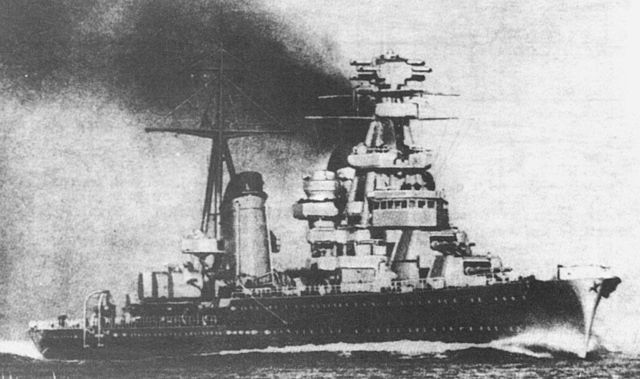
Specifications
Displacement & Dimensions: 8,177t, 9792t FL – 191 x 17.7 x 6.33 m
Propulsion: 2 shafts Parsons turbines, 6 Yarrow-Normand boilers, 129,500 hp. 35 knots
Armor: Decks, belt 76mm, barbettes 80, turrets 76mm, CT 152mm
Crew: 734
Armament: 3×3 180mm guns (3×3), 6×1 100mm DP guns, 10x 45mm AA guns, 4x 12.7 mm HMG, 2×3 533 mm TTs, 2 planes.
Soviet Interwar Conventional Cruisers Projects
 Project X, large multipurpose scout (1930)
Project X, large multipurpose scout (1930)
The soviet admiraly estimated the cruiser type has proven itself a very versatile vessel as shown in numerous battles, capable of performing a wide spectrum roles & tasks, in part dependent of its design philosophy. The Large Cruiser called Project “X” was initially intended to be a “cruiser killer”, and heavy cruiser but more combat roles were added and it was to be capable of coordinating a small fleet or flotilla or operate independently for the fleet command for about a week.
By 1935, Dr. Anatoly I. Maslov unveiled Project 26 (the future Kirov class, first Soviet Navy light cruiser, as part of the intensive efforts to rebuild the Soviet Navy, under the “Large Fleet Program” launched by Joseph Stalin. V. P. Rimsky-Korsakov designed Project “X” as a larger cruiser, in fact the very first heavy cruiser on the Washington/London treaty sense for the Soviet Navy.
Rimsky-Korsakov’s should be able to defeat other cruisers, even as large as the German Deutschland-class, and for this needed a greater artillery caliber than the usual 8-in (203mm) and to have the range to conduct autonomous operations while coordinating with a division or flotilla, ideally made of a few light cruisers and destroyer leaders such as Kiev & Tashkent class, and destroyers, submarines and support ships. This new universal cruiser was to be able to perform as well anti-submarine warfare, commerce raiding or interception of enemy raiders, minelaying, and skirmishing with larger fleets. Project “X” could only do this by unconventional means.
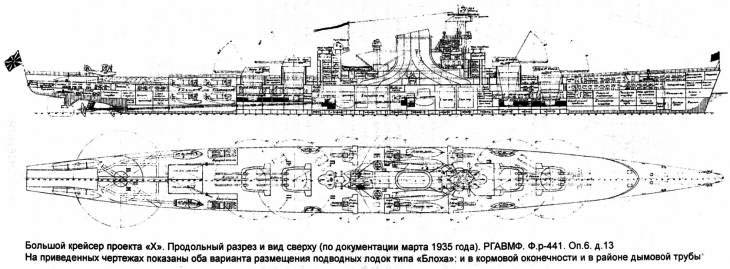
As designed her standard displacement was to be at least 15,518 tonnes and up to 17,350 tonnes fully loaded for a hull as large as 233.6 m overall for a beam of 22.3 m and draught of 6.6 m. Initial armament was to be four triple 240 mm/60 main guns supplemented by six twin 130 mm/50 B-2LM turrets as secondary battery and two triple 533 mm triple torpedo tubes. The AA battery was to comprised six single 45 mm/46 21-K AA cannons and four single 12.7×108 mm DShK. It was believed at that time indeed, these would provide an efficient cover against 500 kph+ monoplanes.
The 240 mm/60 naval guns as designed had the following caracteristics:
• Projectile weight: 235 kg
• Charge: 100 kg
• Muzzle velocity: 940 m/s
• Ammunition per gun: 110 rounds.
• Elevation –5 degrees to +60 degrees
• Rate of fire at 10 degrees optimal for reload: 5 rounds a minute
• Useful Range: Minimum 30,000 meters
Project X eventually was cancelled in 1941.
Instead, efforts already went into two direction: The Kronstadt class battlecuisers, and the more reasonable Type 82 and 66 cruisers.
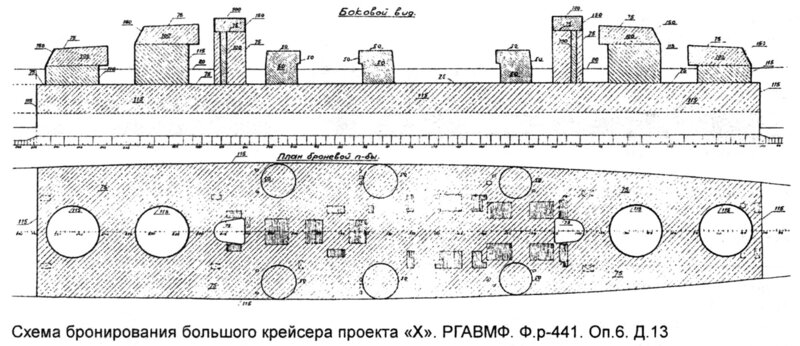
Armour scheme
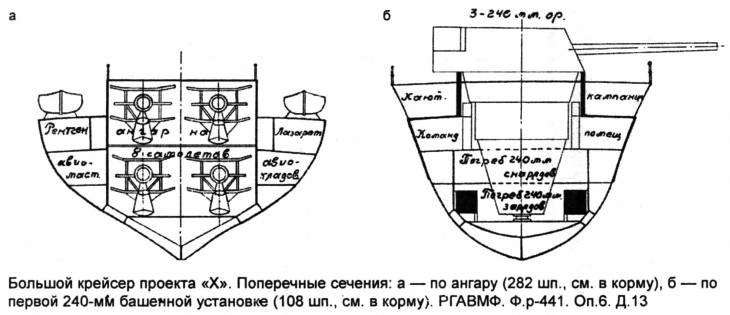
Floatplanes hangar hull details cut
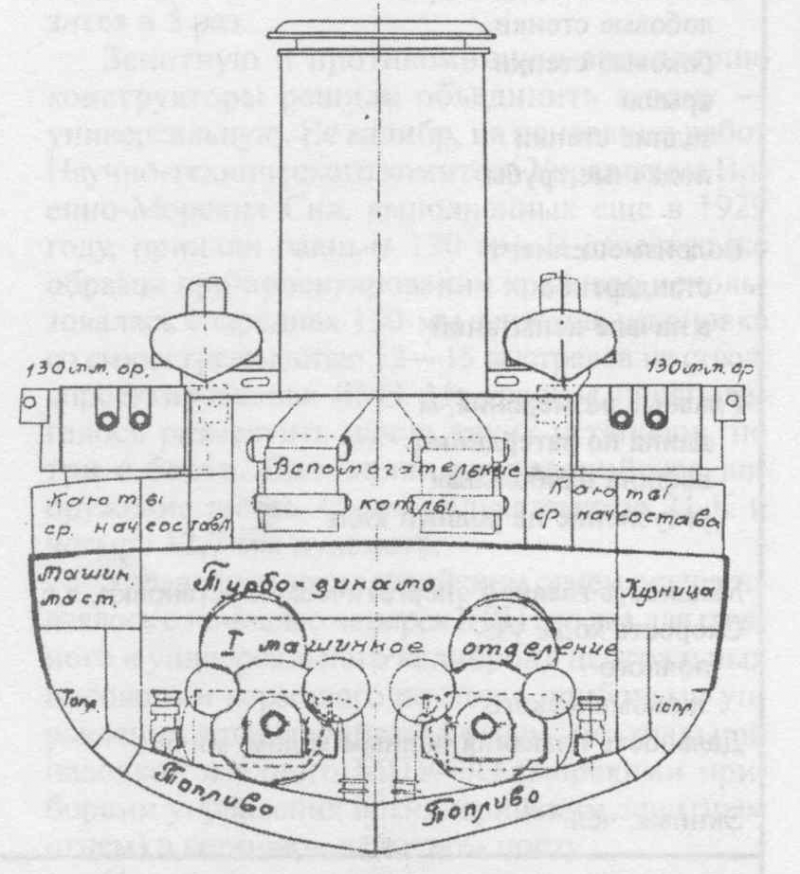
Machinery cut
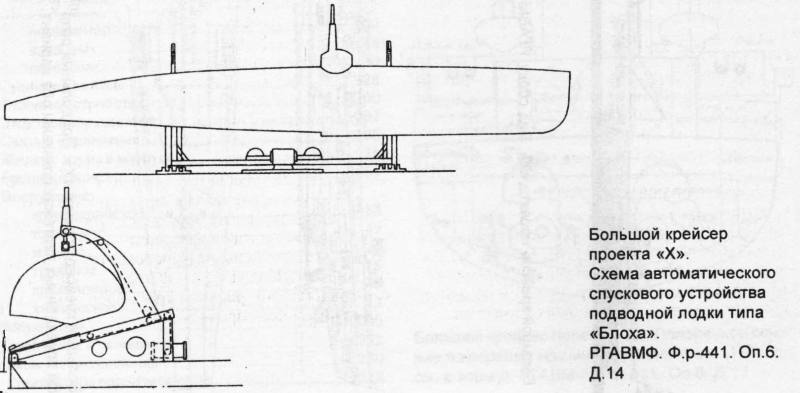
“Flea” type midget sub-Torpedo Boat
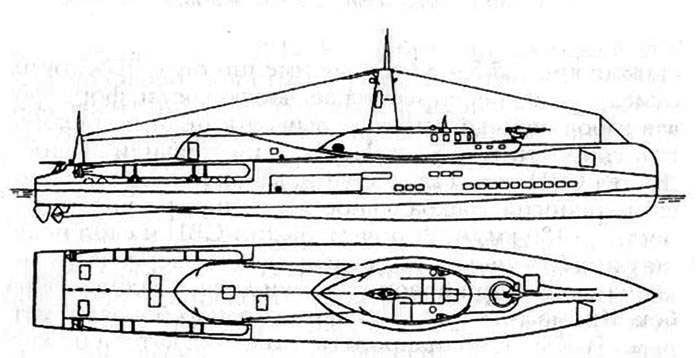
Flea 400 type Midget TB
Soviet interwar and WW2 projects with details (if any)
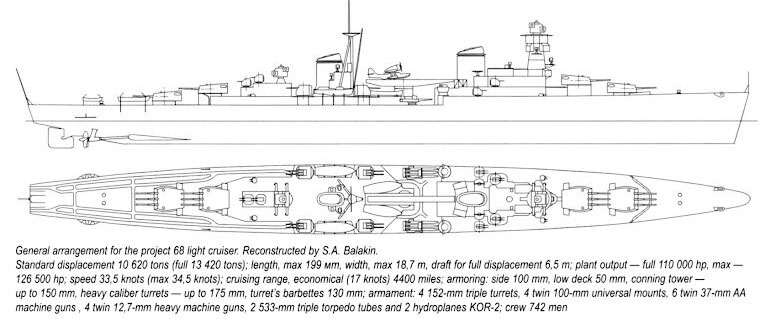
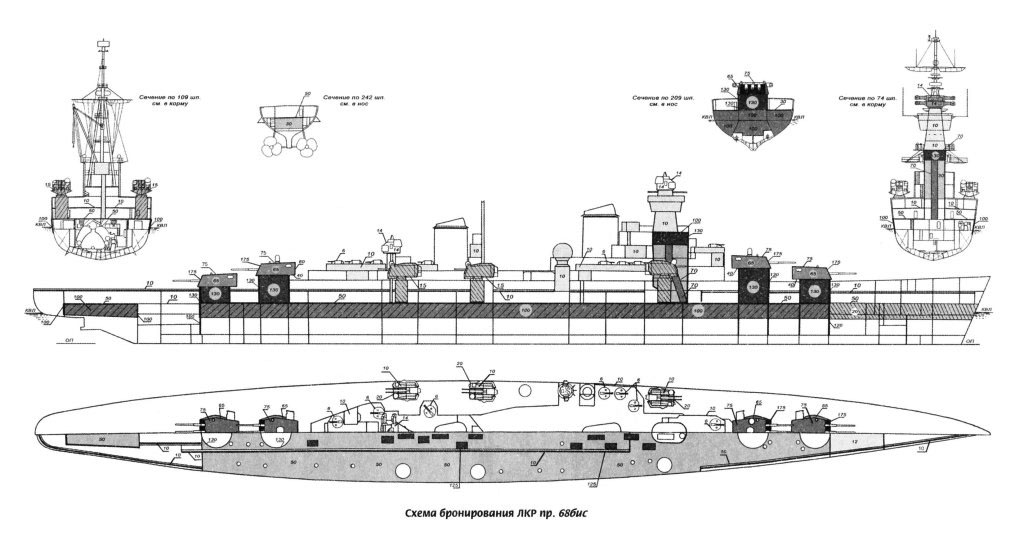
Project 68 (Chapayev) and 68 bis (Sverdlov)
Project 22: 17,000 tons Heavy cruiser 1936 design, cancelled 1939
Project 26: Kirov-class
Project 26bis: Improved Kirov-class
Project 27: Proposal to reconstruct Petropavlovsk as a battlecruiser
Project 28: Design of a scout cruiser (later evolving at the Chapayev class)
Project 33: Conversion of Kirov-class cruiser Voroshilov to missile cruiser
Project X: A prospective 1938 heavy cruiser (15,000 tonnes) armed with 240 mm guns.
Project 64: A Battlecruiser armed with 356mm guns, improved Project 25 created in response to the Dunkerque-class and Scharnhorst-class battleships.
Project 65: 1946 14,500-ton Light cruiser design
Project 66: The “cruiser killer” 1953 30,750-ton Heavy cruiser design, postwar evolution of Project X
Project 83: was the Ex-German heavy cruiser Lützow and projected completion to Soviet standards, obtained in 1941 but never completed.
Project 84: 1958 15,000-ton Heavy Anti-aircraft cruiser design
Project 94: Further development of the Project 26bis Light cruiser design with 3×3 152mm guns
Post-WW2 projects:
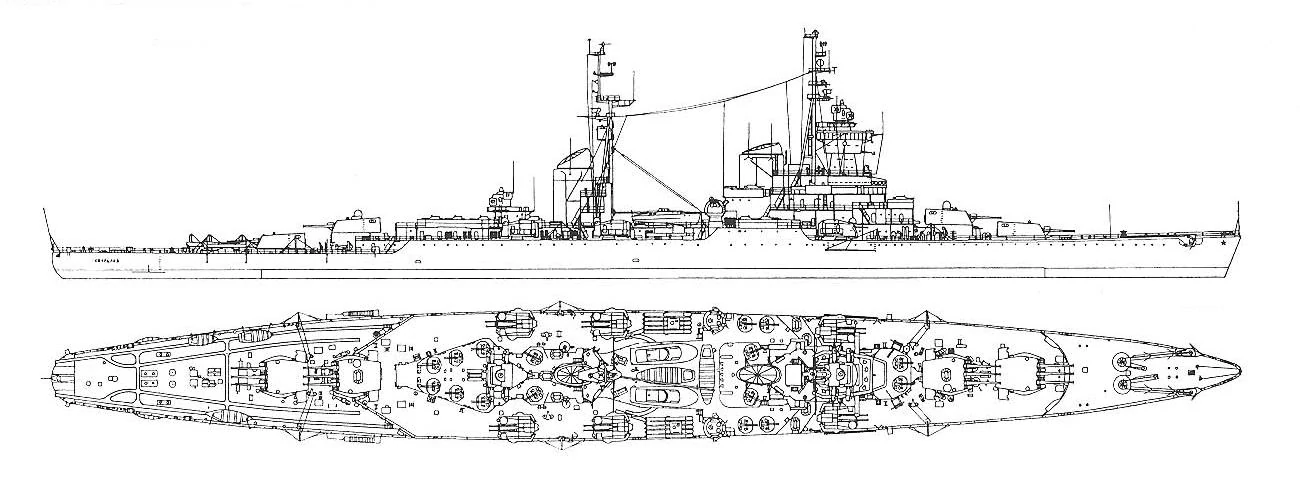
“Super Sverdlov” project
Project 66AV – 68AV 1953 Aicraft Carrier design conversion based on Project 66/Sverdlov class light cruisers
Project 67 1952 Modernized Sverdlov class light cruiser Admiral Nakhimov
Project 67Bis 1957 Modified Sverdlov class guided missile light cruiser design with SS-N-3C Shaddock missiles
Project 67EP 1955 Modified Sverdlov class guided missile light cruiser Admiral Nakhimov with 4 SS-N-3C Shaddock missiles
Project 67SI 1956 Modified Sverdlov class guided missile light cruiser Admiral Nakhimov with Aft SS-N-3C Shaddock missiles
Project 68 1939 Chapayev class light cruiser
Project 68A 1972 Modernized Sverdlov class light cruiser
Project 68Bis 1949 Sverdlov class light cruiser
Project 68C 1947 Modified Chapayev class light cruiser Chaklov with German 105mm AA Guns
Project 68E 1954 Modified Sverdlov class guided missile light cruiser Admiral Nakhimov with 1 SS-N-1 Scrubber missile
Project 68ER 1955 Modified Sverdlov class guided missile light cruiser Admiral Nakhimov with 1 SS-N-1 Scrubber missile but improved launcher system
Project 68I 1946 Modified Chapayev class light cruiser design with German Guns
Project 68K 1946 Improved Chapayev class light cruiser
Project 68U 1965 Modified Sverdlov class command cruiser design
Project 68U-1 1965 Modified Sverdlov class command cruiser Zhdanov
Project 68U-2 1966 Modified Sverdlov class command cruiser Admiral Senyavin
Project 68VVS 1948 Modified Sverdlov class light cruiser design to install the Engines of the Battleship Sovetskaya Rossiya
Project 69 1939 Kronshtadt class battlecruiser
Project 69AV 1945 Kronshtadt class battlecruiser conversion into carrier
Project 69I 1939 Kronshtadt class battlecruiser with German 38cm guns
Project 70E 1957 Modified Sverdlov class guided missile light cruiser Dzerzhinskiy with SA-N-2 Guideline missiles
Project 71 1958 Modernized Sverdlov class guided missile light cruiser design for Admiral Nakhimov
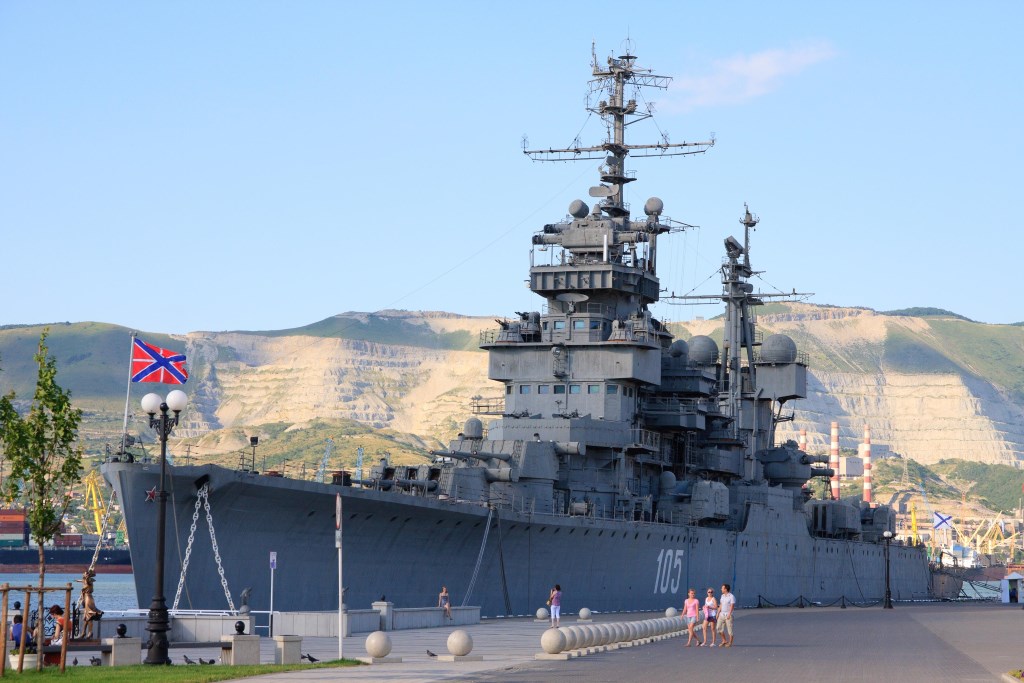
The Kutuzov as of today in the black sea.
Soviet cruisers in 1941
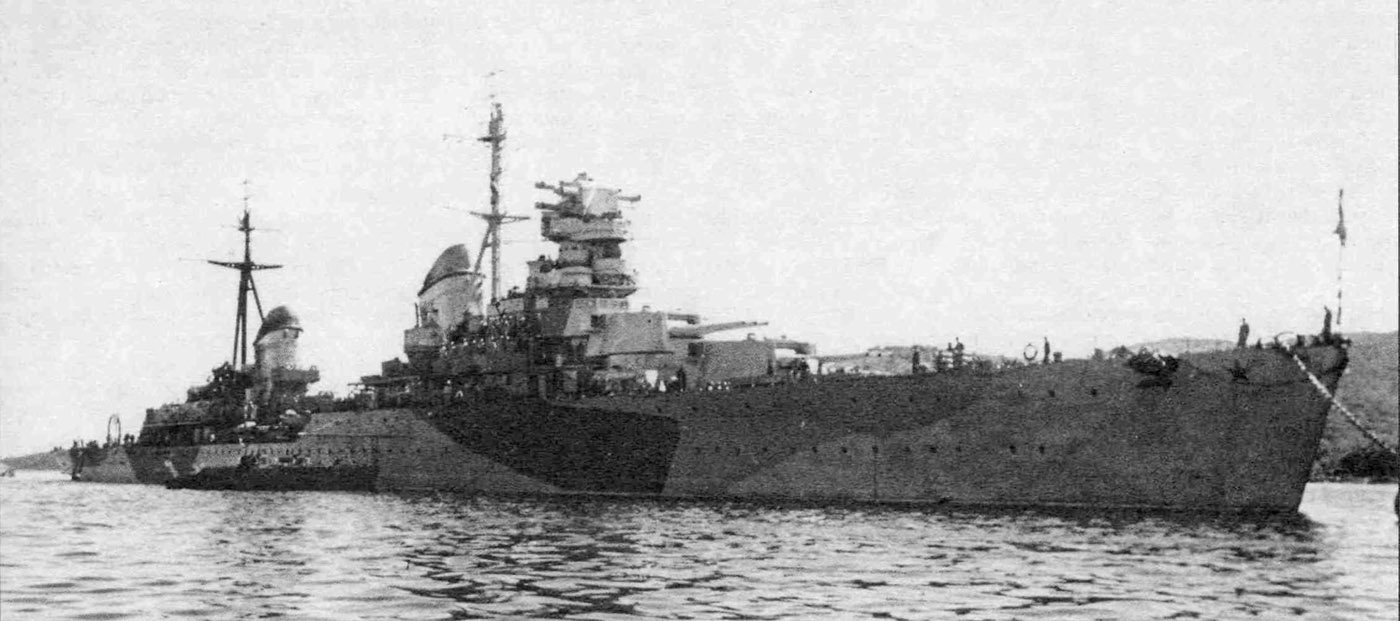
In 1941, the fleet included 8 cruisers, the oldest being the Komintern (ex-Pamiat Merkurya, 1904), training ship; the very famous Aurora, because before being kept as a floating museum of the revolution from 1948, it was put back into service in 1923, as a cadet training ship until 1931, and remained in the harbor at Leningrad, until the invasion, bombed by the Luftwaffe and then scuttled to avoid capture. It was refloated in 1944 and repaired, restored to its original state of 1917. It is still visitable and is one of the Kitsch tourist attractions of Leningrad today.
More recent and therefore of more obvious military value, the Svetlana class cruisers, built from 1913 and of a first class which was to include 6 units, suffered the vicissitudes of the conflict and only the three most advanced units entered service. , the Chevronya Ukraina (ex-Admiral Nakhimov) in 1927, the Krasny Krim (ex-Profintern, ex-Svetlana) in 1928, and the Krnasny Kavkaz (ex-Admiral Lazarev) in 1932. the latter, completely rebuilt, had no nothing to do with the other two. The first two had a relative military value due to their outdated design.
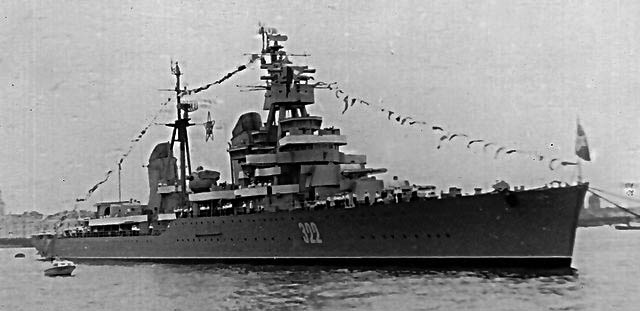
The cruiser Kirov in the 1960s
The most efficient and newest cruisers of the Russian Navy were those of the Kirov and Maxim Gokiy class. the first had been built like the second in the Soviet Union, but their design was almost entirely Italian. In fact, they are reminiscent of certain ships of this navy. However, they have certain peculiarities such as the adoption for the main artillery of triple 180 mm turrets, an unusual configuration (standard 203 mm – or 8 inches, for heavy cruisers or 152 mm – or 6 inches, for light cruisers). But by their tonnage and the comparison with older units, they fall into the category of heavy cruisers. The two Kirovs were finished in 1938 and 1940, the Maxim Gorkiy in 1940 and the Vyacheslav Molotov in June 1941, the 6th, almost 15 days before the German invasion (June 22). The other two units of the class, the Kaganovitch and the Kalinin, will only be ready in 1943 and 1944. Finally, the Chapayev class cruisers, started in 1938-39-40, launched in 1940 for the first, will not be completed until well after the war.
 Proyekt 28 light cruisers design
Proyekt 28 light cruisers design
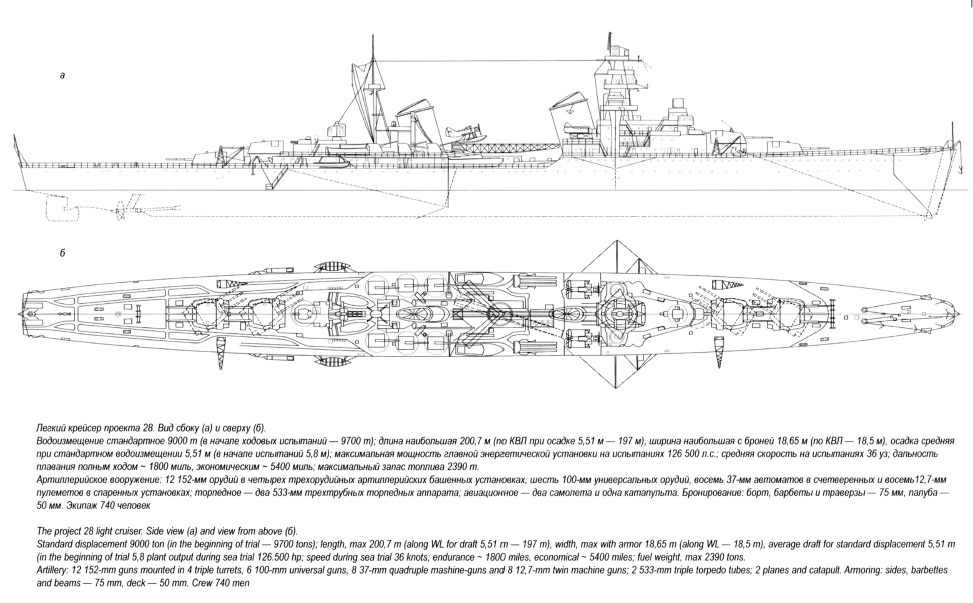
Project 28 cruisers
The Project 28 light cruiser were an attempt by Russian designers of a light escort cruiser able to repel light enemy forces in a fleet underway. It was based upon a lengthened Kirov hull to have four turrets with 8-in/57 guns, prioritizing rate of fire ideal for their main purpose, but also a “light cruiser” according to the London Naval Treaty of 1936, which USSR considered signing. Five were planned (2 for the Northern flotilla, 3 Baltic fleet). Development started in July 1936 by the Leningrad Design Institute. Preliminary draft was completed in June 1937. It was however cancelled on October 1, 1937 ans remodelled as Project 68, the future Chapayev class.
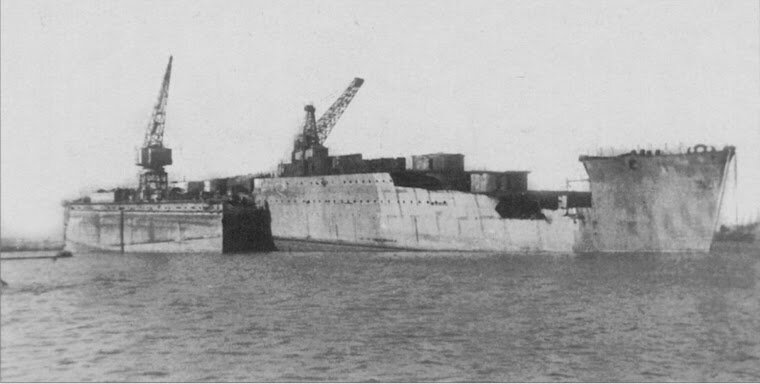
The hull of Frunze, uncompleted in 1941
The next class, studied in 1937-38, called Project 68, was ready and approved in 1938, the first keels beeing laid down as part of a mobilization, mass construction programme with seven ordered for the first batch, laid down in 1938-40, and only the first five were launched in 1940-41. They would be completed after the war in 1949-50. Overall, they looked like a new interpretation of the Kirovs and Gorkiys, but were much more powerful (15,000 tons at full load), larger (201 meters by 19.70), more comparable to a Cleveland or Mogami with 6-in rapid fire main artillery, and substantial AA. They served until the late 1960s.
 Project 68 (Chapayev) class (1941)
Project 68 (Chapayev) class (1941)
Chapayev, Zheleznyakov, Kuybyshev, Chkalov, Frunze
http://russia-history.narod.ru/sovships.htm
A class of “light cruisers” started in 1938-40, launched in 1941. All fitted with four triple gun turrets with 152 mm guns instead of 180 mm. The same type of choice made by US, British and Japanese post-London cruisers. Lighter but larger artillery with a higher rate of fire and AA capabilities was preferable. The hulls evacuated out of reach of the Germans were completed after numerous modifications in the 1950s. The class comprised the Chapayev, Zheleznyakov, Kuybyshev, Chkalov, and Frunze. A second derivative class, Project 68K (later Sverdlov) will be started on improved plans in the 1950s. They will be the last Soviet conventional cruisers.
The tactical and technical task (TTZ) determining Project 68 design was developed to take into account a changed naval doctrine which targeted the same armament as project 28 on a standard displacement of 8,000-8,300 tons (still London-Washington compatible) with the same three triple MK-5 type mount for the B-38 152 mm main battery. It was completed by four twin turrets B-54, 100-mm dual purpose guns, six twin 37 mm type 66-K. The belt armor was to be no more than 100 mm and the armored deck 50 mm, deemed sufficient to deal with 152 mm shells impact at about 50-120 cables (9,200-22,000 m). In order to expand her maneuvering area within distances safe from enemy armor-piercing shells the speed required was 35 knots. Compared to Project 26-bis, late Kirov class, this had increased armor protection, better cruising range and autonomy to fit the Northern and Pacific theaters. The Power plant was generally similar to the Project 26-bis.
Leningrad TsKB-17 worked on final drafts in 1938, approved by a resolution under the Council of People’s Commissars of the USSR on July 13, 1939.

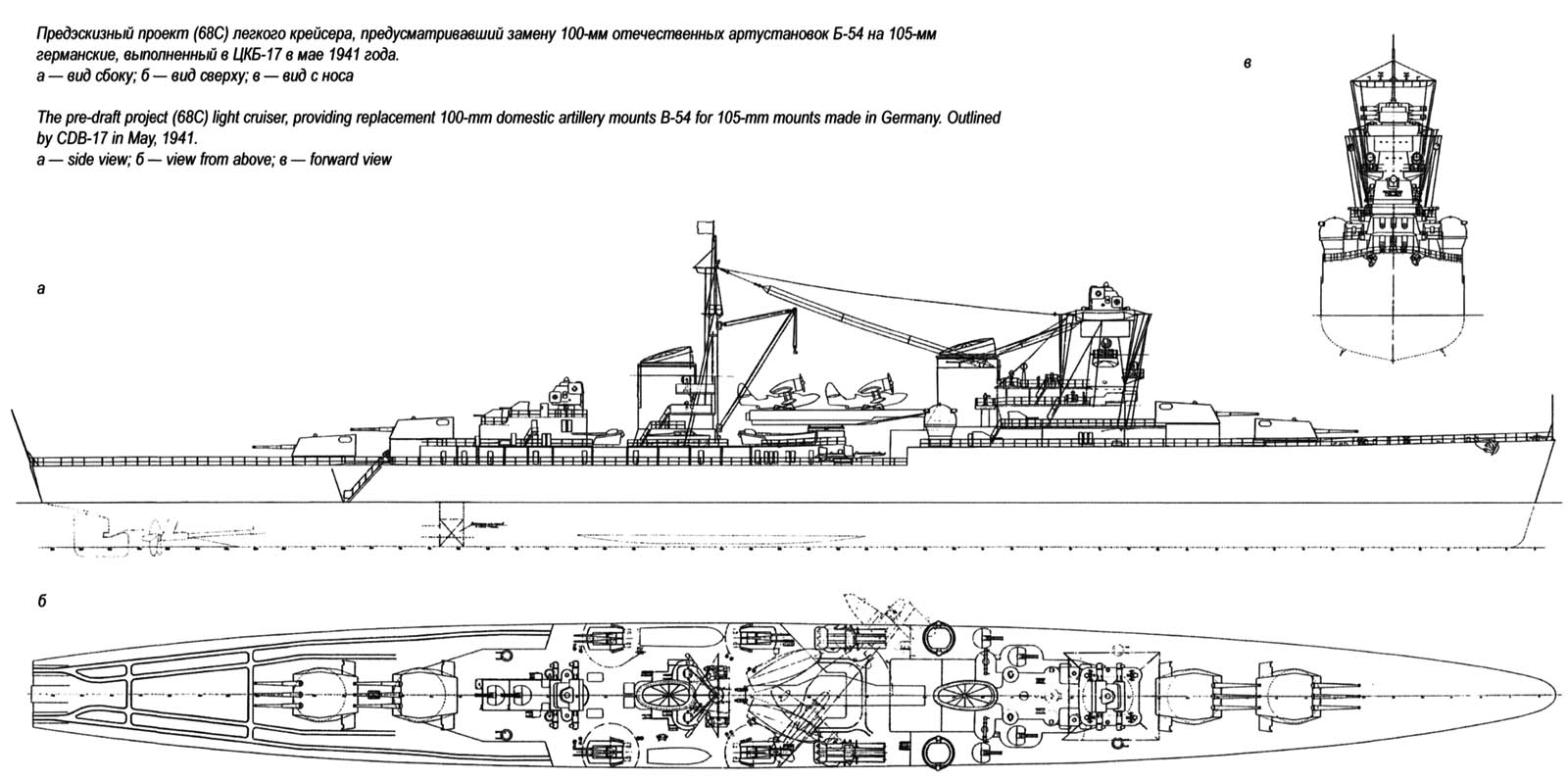
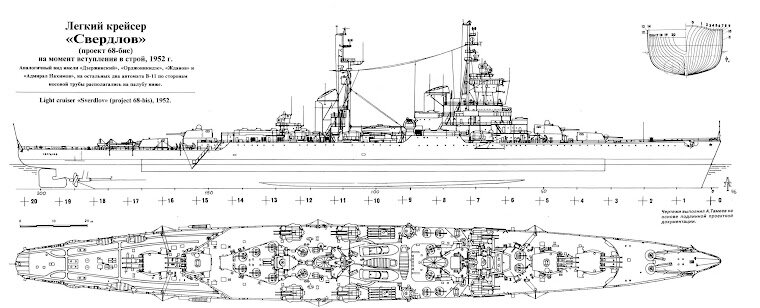
Project 68 cruisers
The preliminary design based on the TTZ was officially started in 1938 at TsKB-17 by team of designers led by A. I. Maslov during construction of Maxim Gorky class (project 26 bis). The choice of smaller, lighter 6-in guns enabled free weight for armor protection, increase the maximum fuel capacity and improve habitability. Steam turbine maximum power was slightly reduced to the detriment of maximum speed. Shipbuilders N. N. Isanin, A. S. Savichev, N. A. Kiselev, G. A. Gasanov participated in the development of project 68 also and soon realistic recalculations had her displacement rose to 9500 tons. Thus the admiralty soon estimated her tonnage was too high for such armament and asked for a fourth aft turret. By Decree on July 13, 1939 standard displacement rose to 10,620 tons, now, and 13,330 tons fully loaded, with a lenghtened hull up to 199 meters for 18.7 meters in beam, 5.9 meters draft and a metacentric height of 0.89 m.
 Proyekt 82 heavy cruiser design
Proyekt 82 heavy cruiser design
Admiral NG Kuznetsov noted the somewhat strange “passion” of Joseph Stalin for heavy cruisers, and this led eventually to the Kronstadt class, either to be considered as a “super-cruiser” in the US Alaska class or Japanese B-54 sense. Or a battlecruiser. It inspired post-war the Stalingrad indeed, which were still called that way but by artillery calmiber, very much still large heavy cruisers.
Bith were to be armed with 12-in guns (30.5 mm) and were indeed in the class of the Alaska. However as shown Project X, the admiralty still wanted a more reasonable and versatile heavy cruiser, that was lacking in the Soviet Navy. Instead of going for a standard 8-in armed one as defined by Washington, from which the Soviet Navy was completely stranger, it was preferred and intermediary, just as the Kirov class which were classed as light cruisers but still had intermediate guns closer to the 8-in caliber.
These projected 220-250 mm guns cruisers in Soviet terminology were not even called “heavy” but “medium” to make a difference with the 12-in cruisers. Debate raged on the mid-1930s about the Istrebiteli Vashingtonskiskh kreiserov or Washington (treaty) cruisers, and wanted a model able defeat any of these 10,000 tonnes heavies. But Stalin had its final overriding preferrence and focus the attenton of design bureaus on his Proyekt 69 (Kronstadt) while the Navy was still left with light cruisers. As a stopgap measure it was decided at the time of the Russo-Germany non-agression pact to acquire the unfinish Kriegsmarine’s heavy cruiser Lützow in May 1940, leading to a new set of requirements in 1941 (OTZ).
This particular cruiser became Project 82, a development of the German cruiser with a top speed of 36 knots, and larger displacement.
Missions for the Type 82 included to engage enemy heavy cruisers, destroy light cruisers, support others, lay minefields, supress medium shore batteries and raiding.
Very little work had been done until the invasion of June 1941 but still interest on the project went on, later mutating into the Project 66.
 Kronstadt class supercruisers (1938)
Kronstadt class supercruisers (1938)
Kronstadt, Sevastopol
The five-year plan approved in 1938 also included several battle cruisers or “super cruisers”. Since the Borodino class, experienced stalled. the Russians no longer had the experience. The first two units of the Konstadt class (Sebastopol was his sister-ship), were therefore defined a bit like super heavy cruisers of 20,000 standard tons, armed with 254 mm pieces.
It was thought at the time that the next step after the 203 mm caliber heavy cruisers would be this one. They were designed to deal with heavy cruisers, but not battleships. It was mainly a question of responding to the German Hipper, who were themselves well beyond the limits of the Washington Treaty.
Their design was revised six months later, this time to meet the Scharnhorst. Their caliber thus passed to 305 mm, and the tonnage climbed accordingly. But with 35,000 tons as standard, they were still respectful of the treaty, even though the head of the Kremlin did not care.
They had standard turbine groups but were close to those planned for the Sovietsky Soyuz battleships, developing considerable power of 230,000 hp, giving them a speed of 33 knots. They were retrospectively inferior to the Iowa. Their protection was relatively important, however, as they had a 230 mm armored belt and a 305 mm turret shield.
Started in July 1939 in Marti and Nikolayevsk, they were both suspended the following year, then captured on the arrival of German troops. The latter blasted Sevastopol’s hull, while Kronstadt was BU in the 1950s.

Kronstadt class probable appearance as built in 1941. Author’s illustration
Specifications
Displacement: 35 240t, 38 360t FL
Dimensions: 248 x 31,4 x 9,10 m
Propulsion: 4 shaft turbines, 231 000 cv. 33 knots max.
Protection: 120 to 305 mm
Crew: 1600
Armement: 9 x 305, 8 x 150, 8 x 100, 24 x 37, 8 x 12,7 mm AA HMGs, 4 planes.
 Proyekt 65 light cruisers (1939)
Proyekt 65 light cruisers (1939)

Project 65 was planned for the Pzcific fleet, facing Mogami, and plans has been to have the first laid down as a Treaty light cruiser, to be later upgraded to a heavy cruiser in case of war, just rearmed as the Mogami were, from 152 to 203 mm guns. Project 65 was postponed and later proposed for the 1946-1955 naval plan in two variant, a light cruiser with nine 152 mm (6 in) guns or with nine heavier 180 mm (7.1 in) guns of the Kirov type. Stalin cancelled the project in 1951, favoring Project 68(bis) and Project 82 instead.
Dusplacement: 9480 standard, 11600 loaded
Dimensions: 196.2 m x 17.7 m x 6.37 m
Propulsion: 2 shaft geared steam turbines, 4 boilers, 148,000 shp, 36.5 kn
Range: 4150 nmi at 18 knots
Armament: 9 × 152 mm (6.0 in)/57 cal B-38 in 3 triple Mk5-bis turrets, 150 rounds per gun
-8 × 100 mm (3.9 in)/56 cal Model 1934 (twin SM-5-1 mounts) 250 rds per gun
-16 × 45 mm in quad AA mounts
-24 x 25 mm in quad AA mounts
-2×5 533 mm (21″) TTs
Armour: Belt, CT: 70, Deck 50+16, Turrets 70, citadel 70-100 mm
Sensors: Search radars “Reef-A” “Gyuis-2” “Foot-N”, STS Zenith, KDP SPN-500, “Foot-B” “Coral” ECM, sonar GAS “Pegasus”
Project Option III-A displaced 12,960-15n580 FL for 220 x 19.7 x 6.88 m, was powered by two shaft geared steam turbines, 4 boilers for 148,000 shp and 35.4 knots, range 5,000 nmi at 18 kn, armed with 3×3 180 mm (7.1 in) Mk5-bis, 6×2 100 mm (3.9 in)/56 Model 1934 SM-5-1 mounts, 4×4 45 mm, 4×4 25 mm AA mounts, no TT. Armour belt 100 mm, CT 70 mm, deck 50+20 mm, turrets 175 mm front, 120 mm side and 80 mm roof, Citadel: 120 mm.
Sensors: “Reef-A” “Gyuis-2” “Foot-N”, STS “Ocean-65”, KDP SM-18, “Foot-B” “Coral” ECM, GAS “Pegasus” sonar.
 Proyekt 83 heavy cruiser (Petropavlovsk)
Proyekt 83 heavy cruiser (Petropavlovsk)
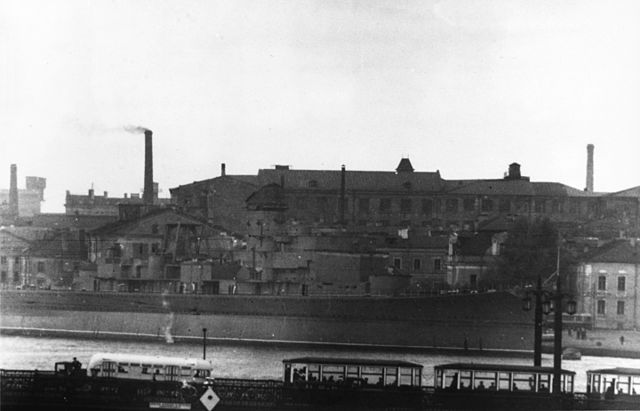
Lützow was towed from Bremen where she was completed to Leningrad on 15 April 1941 and the two navies agreed that Germany would ensire towing and escort, laced under responsibility of Rear Admiral Otto Feige which later also assisted Soviet effort to complete her.
She only had the two forward gun turrets installed, and the base of bridge superstructure, and 3.7 cm AA guns installed when renamed Petropavlovsk on 25 September 1940, becoming Projekt 83. Projekt 82 was indeed canceled before work began on a completion of the existing cruiser without much change but Soviet standard AA guns. Training proved contentious while in Germany, until instructors were rather sent to the Soviet Union. Sea trials for Petropavlovsk were scheduled by late 1941 but of course all was halted in June 1941.
Petropavlovsk was still incomplete but she was nevertheless used as a floating battery during the defense of Leningrad in August, later reinforced by Maxim Gorky. On 7 September she directly fired on German forces encircling the city, about forty salvos from her forward main battery, some 700 rounds. 17 September 1941 she was targeted and disabled by German heavy artillery, hit 53 times and beached to avoid sinking.
On 4 April 1942, I Fliegerkorps (some 62 Ju 87s, 33 Ju 88s, and 37 He 111s) attacked Leningrad and hit once Petropavlovsk was hit once (credited to ace Hans-Ulrich Rudel) and sunk. She would be raised on 17 September 1942, towed to the Neva and repaired, renamed Tallinn in 1943 and towed in position to assist the Soviet counter-offensive, ending the Siege in 1944. She remained afterwards as a stationary training ship and floating barracks in the Neva, renamed Dniepr in 1953. The disposal date is a conflicting matter among Historians. Erich Gröner place it as far as 1960, Conway’s All the World’s Fighting Ships 1958, Tobias Philbin as early as 1953.
 Proyekt 66 heavy cruiser design (1941)
Proyekt 66 heavy cruiser design (1941)
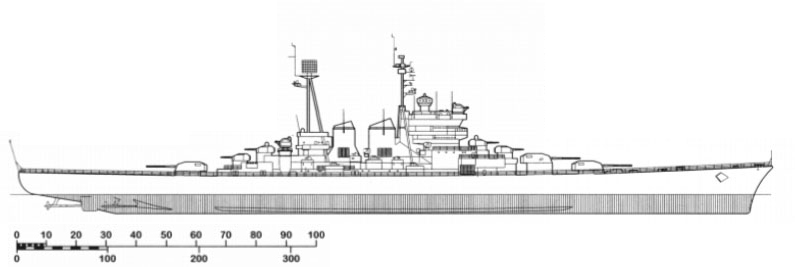
OTZ May 1941 (Project 82) asked for 8×203 mm guns, 12×100, 12×37, 2×3 TTss, 8-in belt armor, 36 kts, 10,000 nm. Project 82 was cancelled and replaced by the Pr. 83, the completion of Lützow as she was.
OTZ 15 Septebmer 1943 called for a 20-22,000 tonnes vessel with 3×3 210-220 mm main battery, 12x130mm secondary, 32x37mm AA, four recce seaplanes, same armour and speed/range.
This revised set of requirements was worked on by TsKB-17, a bureau specialized in cruiser design. I all, it came out with eight variants, none meeting the stringent requirements. Sketches and models were sent to the Navy for evaluation. This only led to new requirements drawn in late 1944:
As said above, Project 66 emerged from a set of specifications which evolved over time:
OTZ 15 November 1944 called for a 25-26,000 tonnes displacement, nine 220 mm for the main battery (still the ideal 3×3 configuration), 16×130 mm, 32x45mm, 20x23mm so a completely new AA. Strangely even though it was late 1944 and the radar has proven itself in battle many time, the design still called for four seaplanes, presumably for long-range recce and target spotting.
Armor was to be the same, but speed and range decreased to 33 knots and 8000 nm respectively.
Kuznetsov referred to them as 230 mm guns cruisers though, and the 8.33 caliber was worked on by the arsenal.
Finally, the last one was discussed during a politburo reunion on 29 September 1945, so after V-Day in Japan, and with premices of a possible new war with the West in mind. Stalin was not sure he wanted an aicraft carrier, but all agreed on the heavy cruiser design, and despite kuznetsov’s objections, wanted a larger cruiser still. He notably wanted a 12-in caliber, but did not insisted before kuznetsov’s staunch opposition, backed by the admiralty.
Shipbuidlding Commissar I.I. Nosenko said Stalin that their team needed at least until 1950 to digest war lesson and passed them on a new prepared design. Kuznetsov however wanted none of it and stuck on his idea of a quicker design based on 220 mm guns.
A new inter-service commission was reunited, and eventually and this time Stalin’s joined kuznetsov for the emergency to start Project 66 as soon as possible.
Stalin eventually obtained to have four of the Project 66 laid down at Yard 402 in Molotovsk, Yard 444 at Nikolaiev and another planned for 1953, plus two more in 1955. This was approved on 27 November 1945. In 1946, TsKb-17 resumed work on both Project 66 and the alternative 12-in guns armed Project 82.
Meanwhile the naval acedemy would conduct studied on 220 mm armed cruisers and better defined their perimeter of action. Eventually Project 66 was fusioned into Project 82 as a variant called the “LKR-220” meaning “light cruiser, 220 mm” only in comparison to the 12-in guns variant…
In 1947, work proceeded and Kuznetsov remembered they were an ideal and relatively inexpensive solution to deal with other cruisers, recoignising the age of the battleship was basically over. He insisted over the 220 mm cruiser concept rather than the 305 mm battleceruisers wanted by Stalin. In February however, the admiral’s insistence over the alternative cruiser cost him his post. He was dismissed by Stalin in February and replaced by I.S. Iumashev. The latter tended to join Stalin in his views that a 220 mm cruiser was too small.
By October 1947 Iumashev came out with a new set of specs for TsKb-17, still nine 220mm, 12x 130mm, 16x 45mm, and variants going from 16,500 to 19,500 tonnes with hulls 233 to 260 m long. They had an output between 200 to 220,000 shp so as to reaching 36 knots but still with a thin armor of 60 mm for the belt, 50 mm for the lower deck, while the 8 and 9 variants had no armor at all.
TsKb 17 also wrked on its own Project X armed with two quadruple turrets forward and Project XI had five triple turrets with 180 mm guns, an evolution of those on Kirov. When Stalin was back to Moskow by November 1947 no decision was made yet, but by March 1948 and it was decided to suspend the 220 mm variant. It’s only by July 1951, before the lack of progress on the 305 mm gun avriant that Iumashev was dismissed by Stalin, and Kuznetov recalled from the Pacific Fleet, still hoping to obtain his 220 mm cruiser.
Unexpectedly Stalin now favored this lighter variant and pushed for it. In fact, after a reunion of the Council of minister, Project 66 was resurrected based on the August 1947 TSkB 17 design (30,000 tonnes, same armament as before, belt protection 150mm, decks 50x75x20mm, 33.5 knots and 6000 nm). The Type 82 was estimated an overkill to deal with “light cruisers”.
 Proyekt 66 heavy cruiser design (1951)
Proyekt 66 heavy cruiser design (1951)
The Des Moines Killers
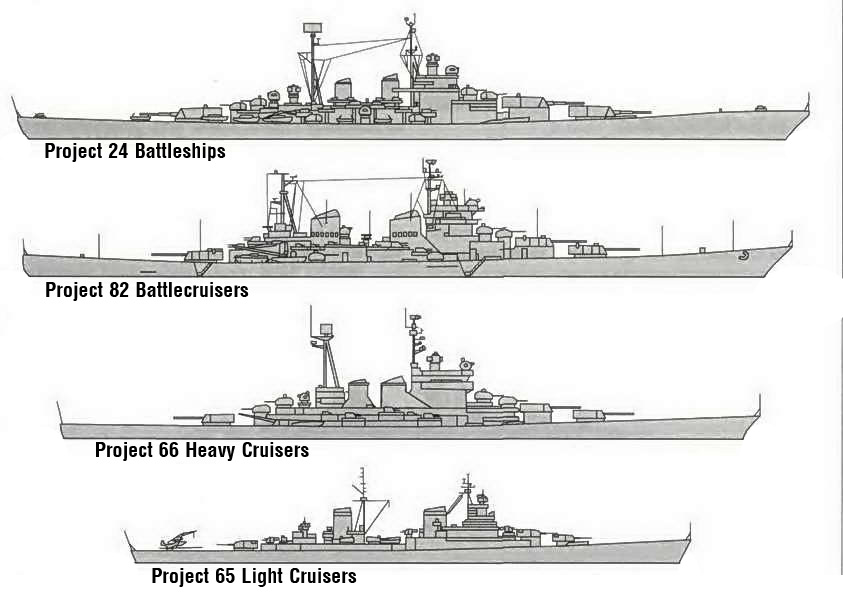
Current cruisers and capital ships wanted by Stalin in the 1950s
The 13 December 1951 agreed these Type 66 cruisers being laid down at Yard 194 Leningrad, changed to 189 Baltic Works in August 1952 and Yard 444 Nikolayev, 372 Sovietskaia Gavan, 402 Molotovsk, up to 1956, for completion estimated in 1957-59. First sketched arrived for examination from TsKb-17 in February 1952, approved on 23 April for further work and plans. It was the same as before with a revised displaement of 25,000 tonnes. The lead designer of the Project 68K (Chapayev class), N.A. Kiselev was hired to head the project assisted by the Navy envoy E.A. Karpukhin. Further work precised the displacement to 24,800 tonns with lesser AA, but better disposed.
The navy just wanted to increase horizontal protection and a new set of requirements was drafted on 1953, with a displacement of 26,330 – 30,850 tonnes, same armament as before but 24x 45 and 24x 25 mm AA, no TT or aviation but radars and FCS. Based on 210,000 shp they were capable of 34.5 kts and 5,000 nm at 18 kts.
The death of Stalin
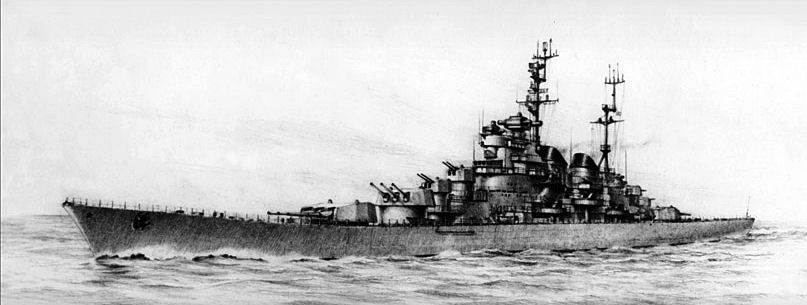
Artist impression of Project 66 in 1953
The death of Stalin had one expected consequence, the immediate cancellation of the Project 82 Stalingrad class, while Project 66 was maintained curiously by Kuznetsov. He notably counted on them to have a decent fleet carrier escort, re-launcging his project of aircraft carrier indeed at the same time. This was approved by a reunion on 18 April 1953, and the final work by TsKb 17 reveals a silhouette very much like the Stalingrad class, albeit smaller in scale.
In the new cold war context, these were to engage and destroy the US Des Moines class thanks to a much greater muzzle velocity, so to procure both better penetration and range and a 176 kgs shell versus 152 mm, but still let down by a slower rate of fire.
The new cruisers counted on the new Molot 66 Fire Control System comprised radars for data, and a powerful ballistic calculator, a simplfied version of the Stalingrad’s More-82 which went nowhere. This was completed by a SM-42 director control tower and the Grot radars, Zalp (later NATO “half bow”) bearing indication radars. The sketches shows small radomes, presumably the Shtag-B (NATO “egg cup”) FCS for the DP 130 mm turrets, SNP-400 stabilized directors (NATO “Sun visor”) for the lighter AA. The 45 and 25 mm were all in quadruple mountings, for a better repartition and arc of fire. Not decribed the FCS associated would probably have been NATO’s “Slim Net” and “Hawk Screech”, Fut-N and B radars.
The armor design was refined by the studied led by the naval academy, still including a citadel and extra protection for the magazines and steering compartment. It was even heavier in places compared to the Project 83 Stalingrad. The underwater protection was supposed to cope with a 250 kgs warheard torpedo hit, not sufficient for the US Mk.15 which had 375 kgs warheads. The plant was essentally the same as the Stalingrad’s but on three shafts due to the smaller space available, each turbine delivered some 70,000 bhp, and possibly derived from the Brown-Boveri models seen on the Sovietsky Soyuz battleships.
1954 Cancellation
By late 1953, TsNII-45 warship research institute ctriticized openly the Project 66 as obsolete before the rapid development of missiles. On 23 December 1953 the Main Naval Staff of the Vorochilov Naval Academy worked on the practical applications of the design and published their conclusions in March 1954, based on tactical games with the Des Moines class. They concluded that based on the rate of fire notably, the latter would have in fact the advantage on an engagement and were credited of greater accuracy notably due to the more advanced US radar tech. The last concern was cost. It had direct consequence of other projects, notably the development of missiles. A single Project 66 was estimated 900 million rubles, not far fromthe Stalingrad class. It’s Kurshchev as premier that decided to pull all resources towards missile ships, a decision Kuznetsov eventualy accepted.
According to navweaps, Project 66 guns were only designed after World War II for the heavy cruisers of Project 22 initially and Stalin’s death meant all was stopped as the Cruisers were cancelled. The guns were still tried for experimental purposes, with the first completed in December 1953, tested at Rzhevsk until November 1954.
Kronstadt guns: 12-in/55 (305 mm) See the 305 mm/55 pattern 1937-40
Upgrade to 305 mm: A new 62 caliber was designed for the Project 82 class battlecruisers, born from Project 66. A prototype gun was built in 1948, tested in 1949-1951 and accepted, with 12 guns built before the project was cancelled in 1953. They were controlled by the Type 82 control system Grot radar rangefinder, including Zalp FC radars.
See the 305 mm/62 Pattern 1948 reserved for Project 66
Foreign cruisers: Murmansk and Kerch
 Murmansk (former USS Milwaukee) transferred 1944
Murmansk (former USS Milwaukee) transferred 1944
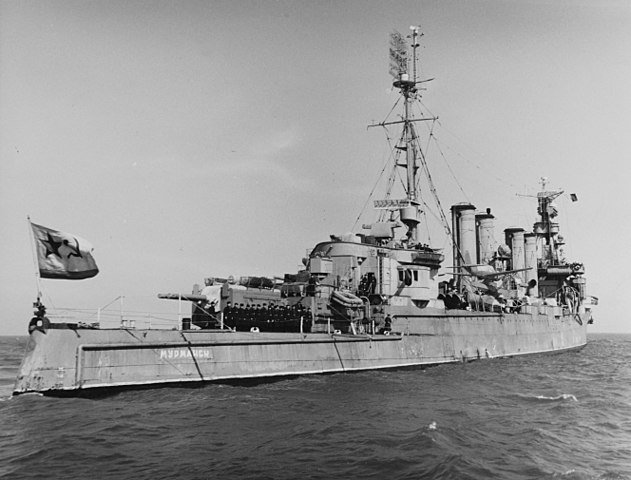
USS Milwaukee was one of the Omaha class cruisers, a brand enw generation of fleet cruisers and destroyer leaders ordered in 1917. She was built at Todd Dry Dock & Construction Co., laid down on 13 December 1918 and launched on 24 March 1922. After a long interwar service and some limited modernization, she saw action in WW2 escorting convoys through south Atlantic. In May 1942 she was attacked by the submersible Barbarigo (Captain Enzo Grossi) but missed. She also intercepted the German blockade runner Anneliese Essberger. However she collided with her sister ship Omaha on 31 May off the coast of Brazil and was repaired in the Brooklyn Navy Yard, on 8 February 1944. There it was planned to have her temporarily transferred to the Soviet Union, in lieu of Italian ships allotted after the Italian surrender. The latter were in such state they needed many month for upkeep. The ceremony of hoisitng the flag was done after she escorted a convoy to Belfast on 8 March before and joined Convoy JW 58 to Murmansk from the 29th. On 20 April 1944, she was officially loaned to the Soviet Northern Fleet, Murmansk, bearing its very name. She performed convoy and patrol duty in the Arctic until V-Day in May 1945 and afterward became a training ship, participating in the 1948 fleet maneuvers.
By the summer of 1944 she passed course tasks, being prepared and started convoy escorrt missions with other ships of the fleet. On July 4, 1944, a detachment with Murmansk as flagship, the destroyer Baku, and the destroyers “Loud”, “Terrible” and “Reasonable” left Kola Bay for the White Sea. The commander of the Northern Fleet controlled the evolution of the formation ships using the cruiser’s radar. In the White Sea, the cruiser worked closely with the destroyers “Thundering” and “Loud”. Using radar, they carried out artillery fire on range on the Coast of the White Sea. On August 25, 1944, the squadron of the Northern Fleet began was supplmented by new vessels of the Royal Navy, and a brigade of destroyers. She made the only combat operation remaining well documented on October 30, as part of a group of 15 transports and two tankers, leaving Molotovsk for Murmansk. They were the “White Sea group” of convoy RA-61, headed by Murmansk. On July 3-5, 1945, a squadron consisting of the Arkhangelsk (ex Royal Oak), Murmansk and six destroyers travelled from Vaenga to the Kuisky roadstead, White Sea for exercizes. By November 26, 1945 Murmansk was sent in the Rostinsky shipyard for upkeep and maintenance.
For five years, she served in the Northern Fleet squadron and roadstead of Vaenga (Severomorsk) making rare and short trips at sea to work for combat training. She made more sorties and participated in final squadron exercises by August 1947. At last on 16 March 1949 she was transferred back to the US, first of 15 US lend-lease ships to be returned, to enter Philadelphia Naval Shipyard for upkeep and be sold for BU by 10 December. 1 2
 Kerch (former Duca D’Aosta) acquired 1949
Kerch (former Duca D’Aosta) acquired 1949
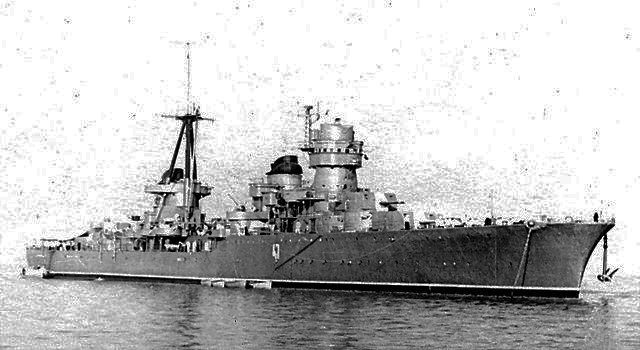
With the exception of a battleship and two submarines delivered in the Albanian port of Vlore as a war reparation, the Montreux Convention still would not allow passage through the Bosphorus of thse, preventing them reaching the Black Sea. An agreement was found in which the ships transited with Italian civilian crews, under the control of Soviet representatives, flying the Merchant Navy flag. The Italians were responsible for their delivery as scheduled. To prevent sabotage, they sailed with no ammunition on board, carried later by cargo ships, with the exception of the battleship delivered with 900 tons of ammunition and a set of 32 533mm torpedoes for the submarines.
The former cruiser Duca D’Aosta was thus delivered with the initials ‘Z 15’ to the Soviet Navy in Odessa on March 2, 1949. Captain Semën Michailovič Lobov took command, a future fleet admiral in 1970. The cruiser was briefly thought to be renamed Stalingrad, then Admiral Ušakov and Odessa, but eventually this settled on “Kerch” for the Black Sea fleet. On February 7, 1956, she was withdrawn from active service, used as a training ship until May 11, 1958, then experimental hull “OS 32”, testing various armament impacts. She was eventually struck by February 20, 1959, BU in 1961.
Soviet Postwar Conventional Cruisers Projects

Project 66 Cruisers
According to Koestler the novel “Darkness at Noon” Soviet naval strategy prior to 1936 Joseph Stalin, decided to change abruptly for the construction of “big submarines.” Toward the end of 1935 in an almost obsessive fashion he became preoccupied by the rapid acquisition of a large oceangoing navy capable of achieving total supremacy on seas and oceans around the Soviet Union. The Sovietsky Soyuz class, really ambitious and with perhaps the best naval guns at the time were laid down in 1938. The non-aggression pact of 1939 created an exchange of wheat, manganese, and petroleum traded for German state of the art naval equipment. This also created a shift with the previous policy of ship design with Italy.
Source: Dr. Hauner, Department of History at the University of Wisconsin–Madison, article supported by the Naval War College.
 Project 68 bis (Sverdlov) class (1945)
Project 68 bis (Sverdlov) class (1945)
Better known as the Sverdlov class, this was Stalin’s most important cruiser programme of his last naval plan. The Sverdlovwere the last soviet conventional cruisers, a massive class insisted upon by Stalin to answer the US Cleveland class. A total of 50 ships were planned to achieve a definitive supremacy. It as howeverreduced to 24, and then 20, started between 1949 and 1955 at the shipyards of the Baltic, admiralty yards, Nikolayev and Severodvinsk in parrallel to the Stalingrad class battlecruisers (Project 82) and Project 66 heavy cruisers.
The death of Stalin:
The death of Stalin had these plans completely scrapped. The idea of a classic battle fleet at the insistence of the Kremlin’s master, which had the same appeal perhaps to Hitler in terms of delusional grandeur, was no longer the priority of the day. Khrushchev, well advised by engineers abour the promised of missiles had more practical and realistic plans, to deal with the numbers deployed by the US Navy with better technology and re-establish balance instead of going on the same terrain. This even went against Admiral Kuznetsov still pleading to complete Project 66. Instead only Project 68 bis light cruisers would be completed. This was the start of a new policy enduring until the 1980s.
Of this total of twenty light cruisers, two never even reached launching stage, being cancelled and BU, four more were never completed, anchored in the Neva estuary (Leningrad) until 1961. Fourteen were completed between 1952 and 1955.
The Sverdlov class design:
Quite close to the Chapayevs, Project 68 bis cruisers had greater autonomy, better overall protection, (double hull on 75% of the length, 23 watertight compartments), inaugurated new radars and fire control systems, new 100 mm mounts also used by the Skoriy class destroyers. The main turrets were improved and the final design adopted in May 1947. However, if some were later converted as hybrid missile cruisers, notably with AS-1 and SS-N-1 “Scrubber” missile, this proved disappointing.
World of Warships renditions
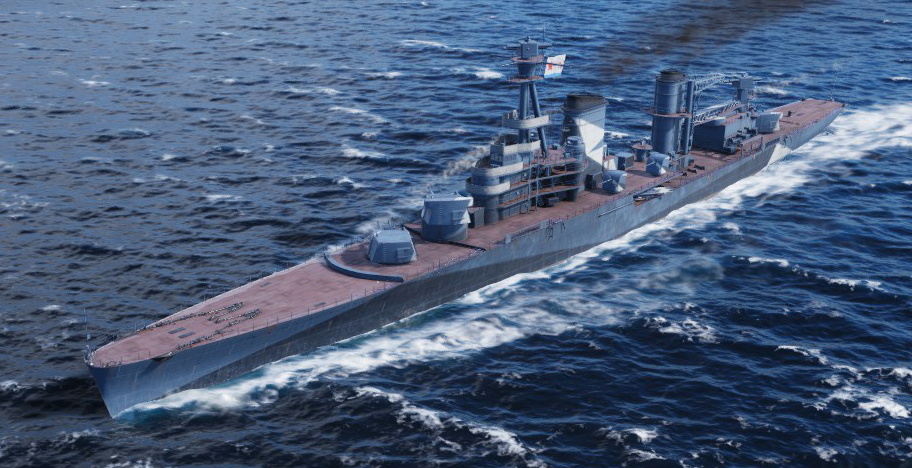
Mikoyan, first project leading to the Kavkaz modernization, but with single turrets instead

Kotokvsky, one of the first projects of a Soviet light cruiser with 6-in guns in twin turrets (Bogus?).

“Riga”, An early variant of Project 82, early heavy cruiser design with 220 mm guns.

“Petropavlovsk”, Another variant of Project 82 with 220 mm main guns and a powerful DP artillery.

“Dmitry Donskoi”, Project 65, a development of project 68 with heavier armament and better speed

Alexandr Nevsky, Project 84 rendition, the last Soviet Conventional Cruiser
Sources/Read More
https://digital-commons.usnwc.edu/cgi/viewcontent.cgi?article=2267&context=nwc-review
http://www.ww2.dk/new/navy/sverdlov.htm
https://www.secretprojects.co.uk/threads/russian-post-war-aa-cruiser-project.20557/
https://www.key.aero/forum/modern-military-aviation/naval-aviation/67932-admiral-nakhimov-sverdlov-class
https://forum.worldofwarships.com/topic/8942-chapayev-and-sverdlov-class-cruisers/
https://www.globalsecurity.org/military/world/russia/65.htm
https://www.key.aero/forum/modern-military-aviation/naval-aviation/67932-admiral-nakhimov-sverdlov-class
https://forum.worldofwarships.com/topic/211117-soviet-large-cruiser-project-x-multipurpose-reconnaissance-heavy-cruiser-concept/
https://www.secretprojects.co.uk/threads/russian-post-war-aa-cruiser-project.20557/
https://www.jstor.org/stable/26394103#metadata_info_tab_contents
https://weaponsandwarfare.com/2017/08/30/soviet-light-cruisers-1950s/
https://weaponsandwarfare.com/2017/08/30/soviet-light-cruisers-1950s/
https://www.globalsecurity.org/military/world/russia/ship-projects.htm
https://www.globalsecurity.org/military/world/russia/ship-cruiser.htm

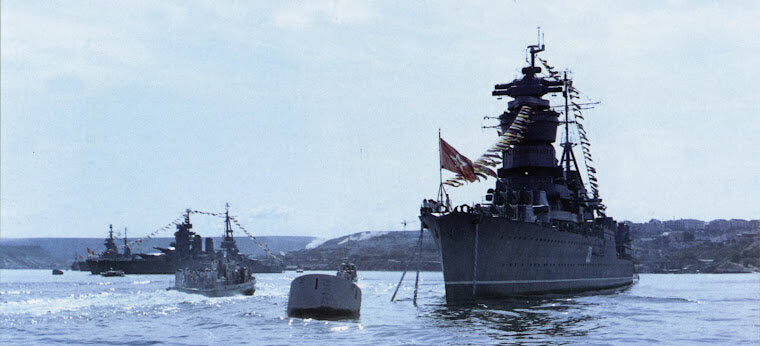

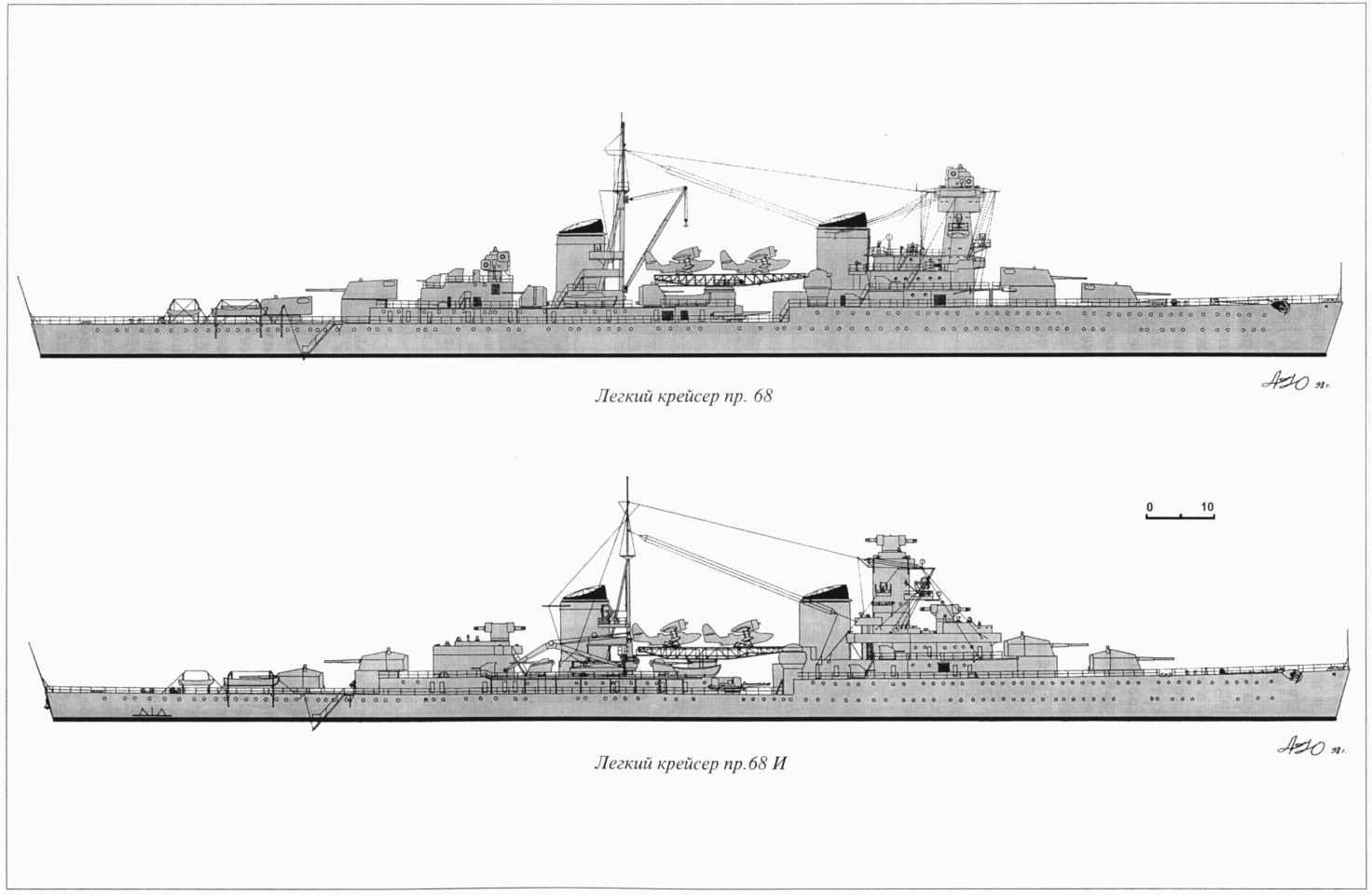
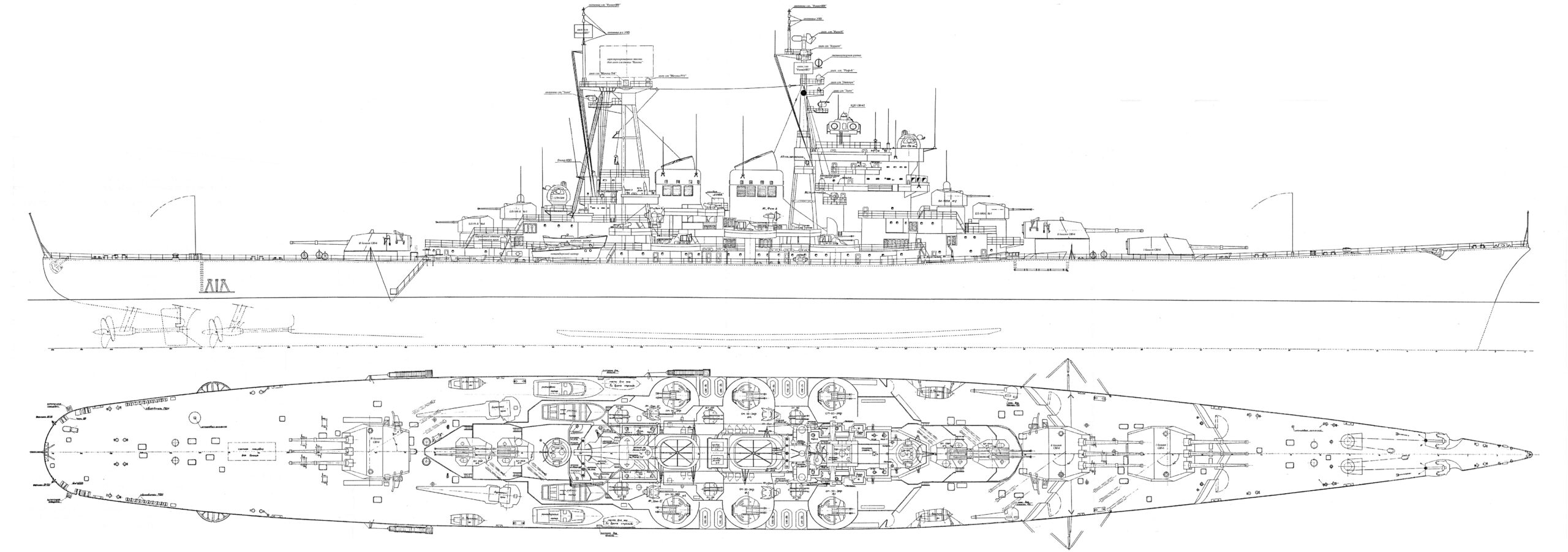
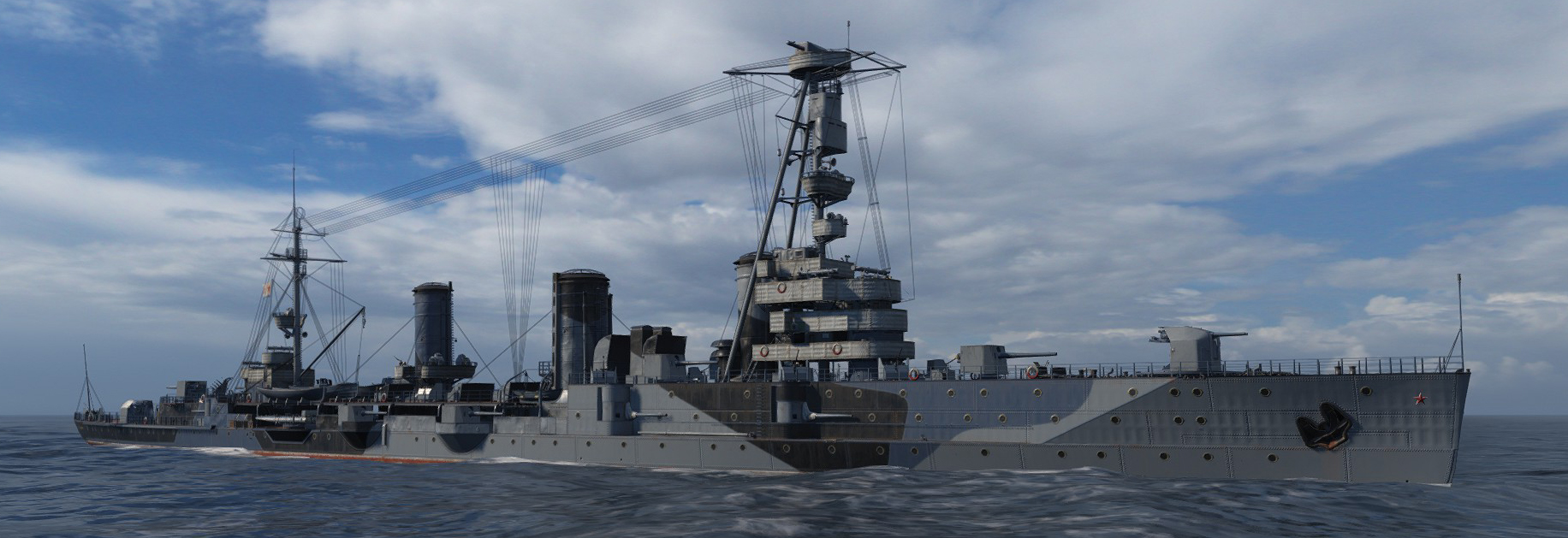


 Latest Facebook Entry -
Latest Facebook Entry -  X(Tweeter) Naval Encyclopedia's deck archive
X(Tweeter) Naval Encyclopedia's deck archive Instagram (@navalencyc)
Instagram (@navalencyc)





 French Navy
French Navy Royal Navy
Royal Navy Russian Navy
Russian Navy Armada Espanola
Armada Espanola Austrian Navy
Austrian Navy K.u.K. Kriegsmarine
K.u.K. Kriegsmarine Dansk Marine
Dansk Marine Nautiko Hellenon
Nautiko Hellenon Koninklije Marine 1870
Koninklije Marine 1870 Marinha do Brasil
Marinha do Brasil Osmanlı Donanması
Osmanlı Donanması Marina Do Peru
Marina Do Peru Marinha do Portugal
Marinha do Portugal Regia Marina 1870
Regia Marina 1870 Nihhon Kaigun 1870
Nihhon Kaigun 1870 Preußische Marine 1870
Preußische Marine 1870 Russkiy Flot 1870
Russkiy Flot 1870 Svenska marinen
Svenska marinen Søværnet
Søværnet Union Navy
Union Navy Confederate Navy
Confederate Navy Armada de Argentina
Armada de Argentina Imperial Chinese Navy
Imperial Chinese Navy Marinha do Portugal
Marinha do Portugal Mexico
Mexico Kaiserliche Marine
Kaiserliche Marine 1898 US Navy
1898 US Navy Sovietskiy Flot
Sovietskiy Flot Royal Canadian Navy
Royal Canadian Navy Royal Australian Navy
Royal Australian Navy RNZN Fleet
RNZN Fleet Chinese Navy 1937
Chinese Navy 1937 Kriegsmarine
Kriegsmarine Chilean Navy
Chilean Navy Danish Navy
Danish Navy Finnish Navy
Finnish Navy Hellenic Navy
Hellenic Navy Polish Navy
Polish Navy Romanian Navy
Romanian Navy Turkish Navy
Turkish Navy Royal Yugoslav Navy
Royal Yugoslav Navy Royal Thai Navy
Royal Thai Navy Minor Navies
Minor Navies Albania
Albania Austria
Austria Belgium
Belgium Columbia
Columbia Costa Rica
Costa Rica Cuba
Cuba Czechoslovakia
Czechoslovakia Dominican Republic
Dominican Republic Haiti
Haiti Hungary
Hungary Honduras
Honduras Estonia
Estonia Iceland
Iceland Eire
Eire Equador
Equador Iran
Iran Iraq
Iraq Latvia
Latvia Liberia
Liberia Lithuania
Lithuania Mandchukuo
Mandchukuo Morocco
Morocco Nicaragua
Nicaragua Persia
Persia San Salvador
San Salvador Sarawak
Sarawak Uruguay
Uruguay Venezuela
Venezuela Zanzibar
Zanzibar Warsaw Pact Navies
Warsaw Pact Navies Bulgaria
Bulgaria Hungary
Hungary

 Bundesmarine
Bundesmarine Dutch Navy
Dutch Navy Hellenic Navy
Hellenic Navy Marina Militare
Marina Militare Yugoslav Navy
Yugoslav Navy Chinese Navy
Chinese Navy Indian Navy
Indian Navy Indonesian Navy
Indonesian Navy JMSDF
JMSDF North Korean Navy
North Korean Navy Pakistani Navy
Pakistani Navy Philippines Navy
Philippines Navy ROKN
ROKN Rep. of Singapore Navy
Rep. of Singapore Navy Taiwanese Navy
Taiwanese Navy IDF Navy
IDF Navy Saudi Navy
Saudi Navy Royal New Zealand Navy
Royal New Zealand Navy Egyptian Navy
Egyptian Navy South African Navy
South African Navy






























 Ukrainian Navy
Ukrainian Navy dbodesign
dbodesign